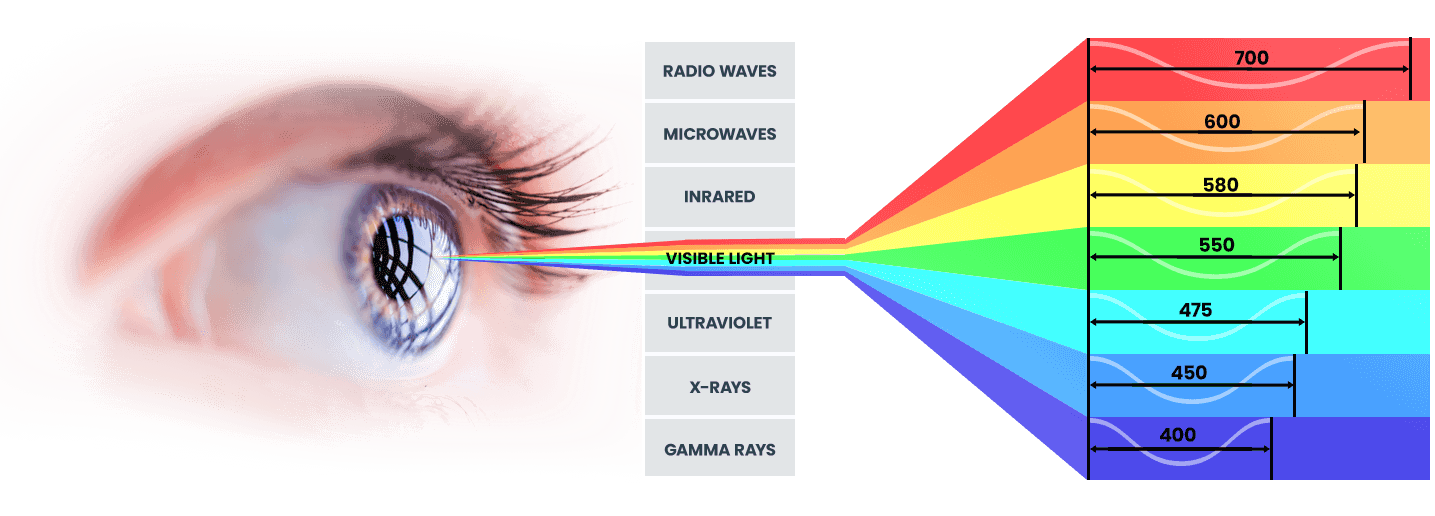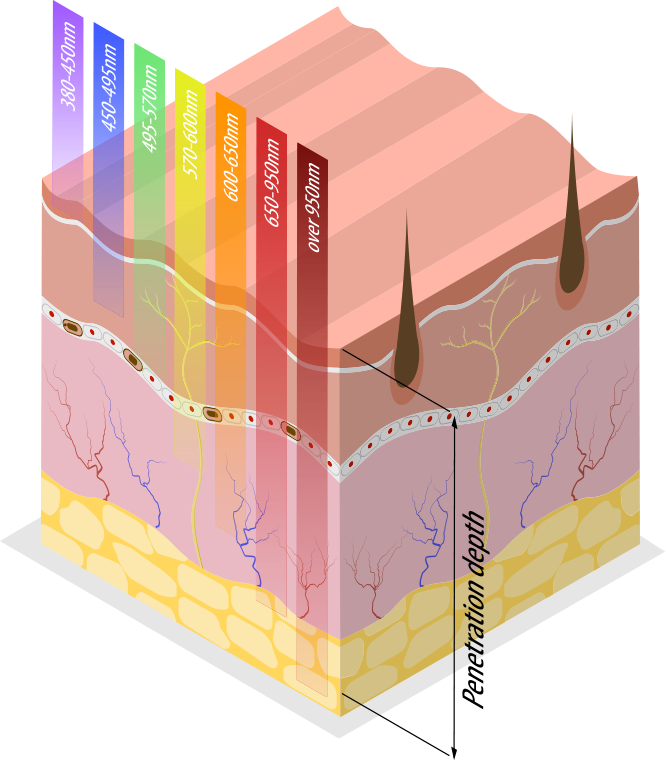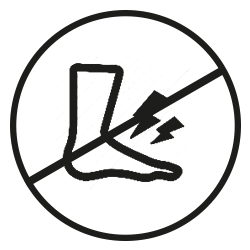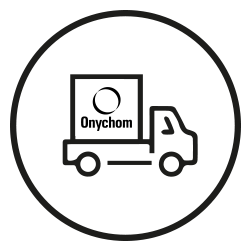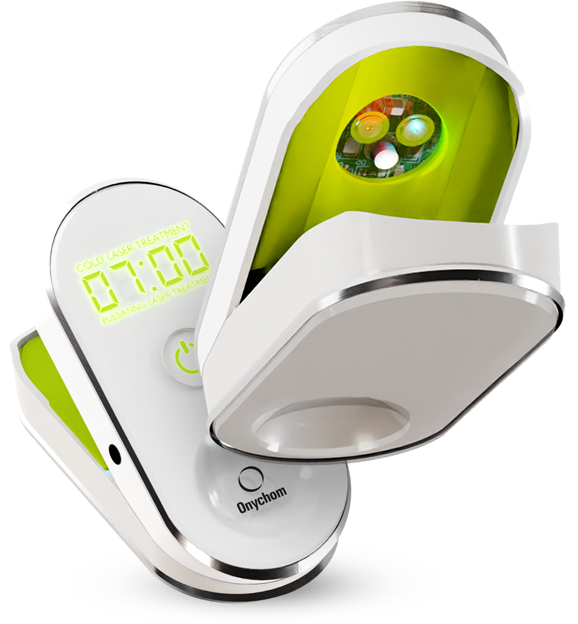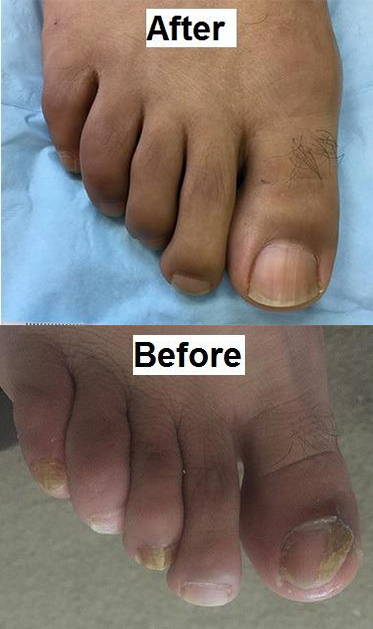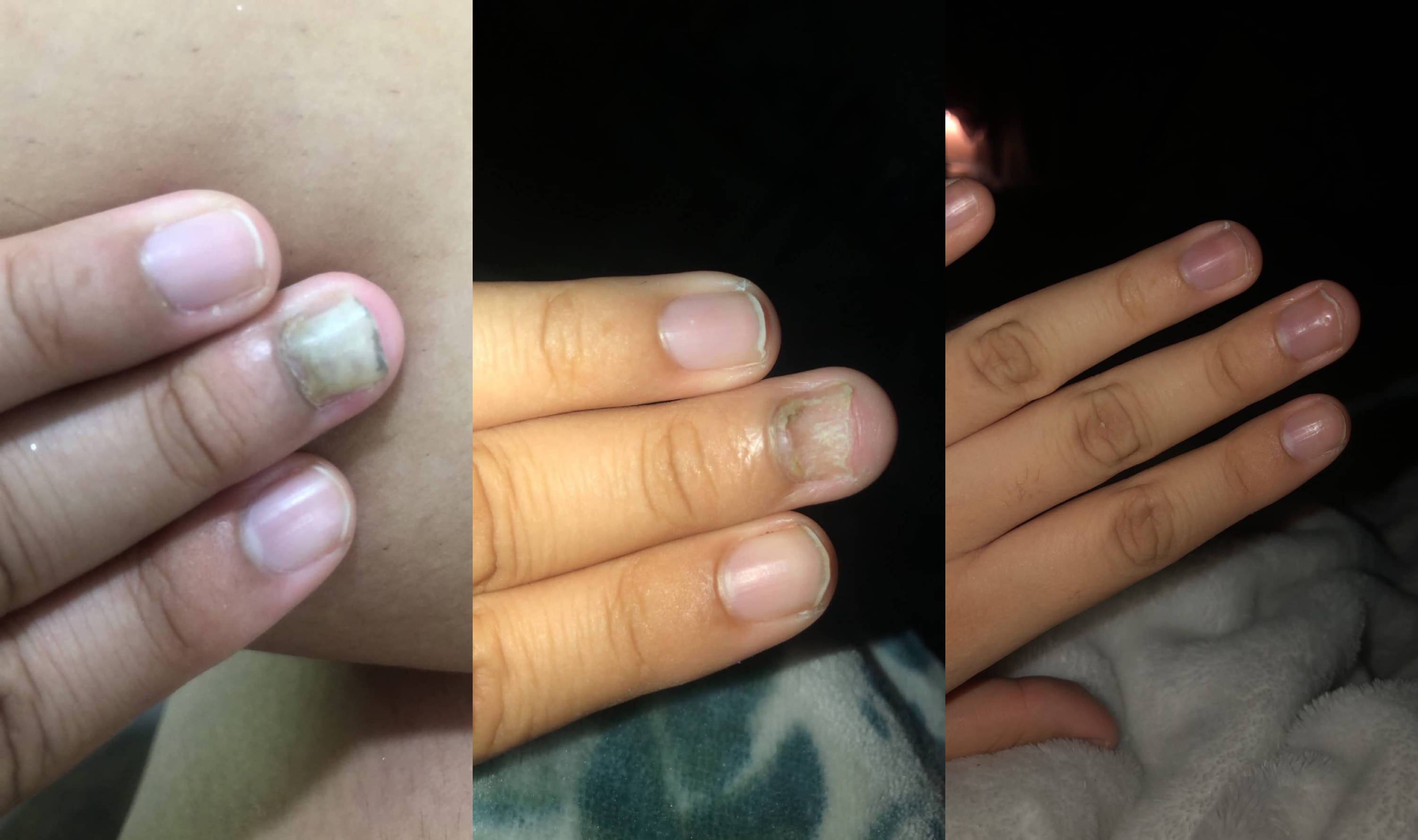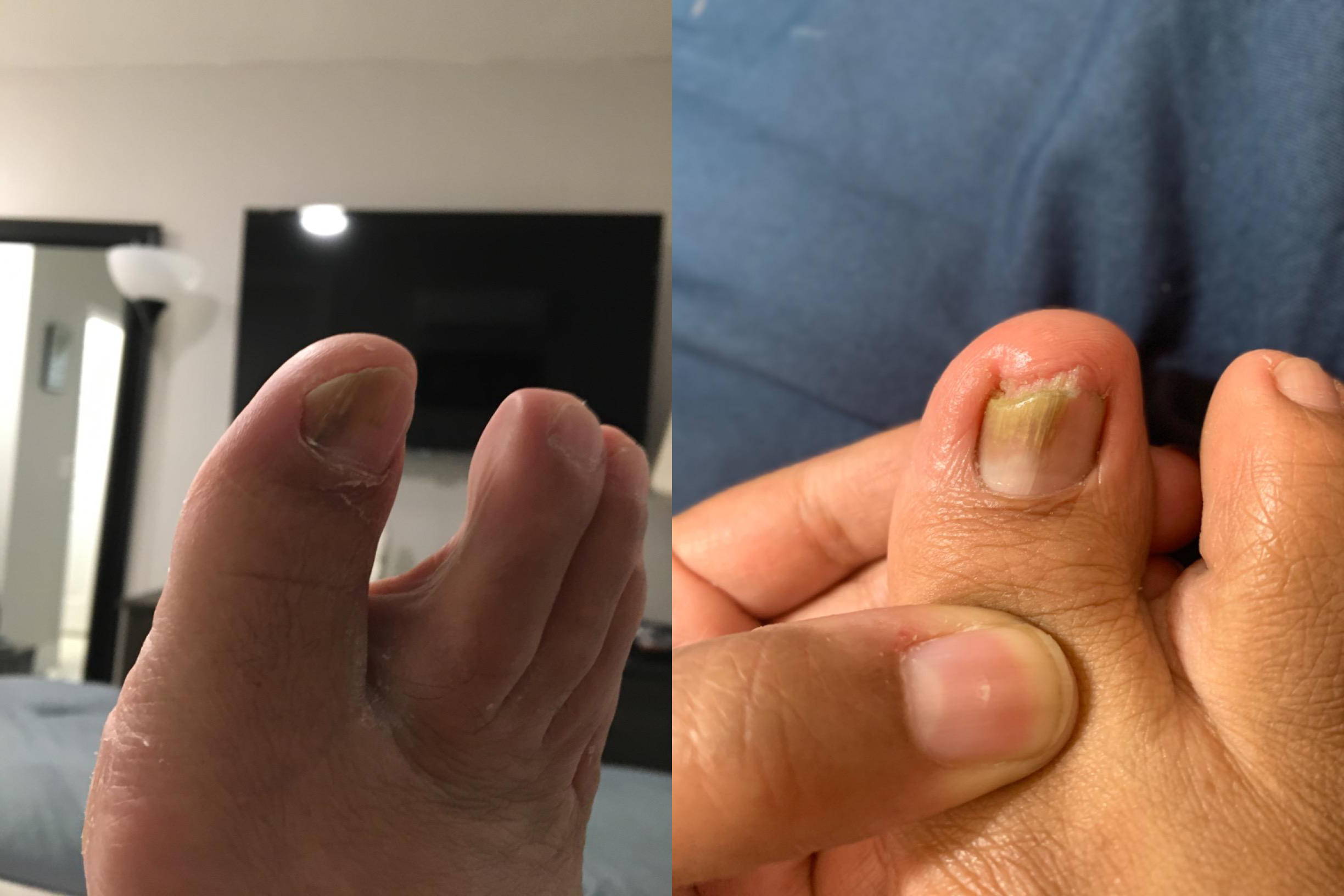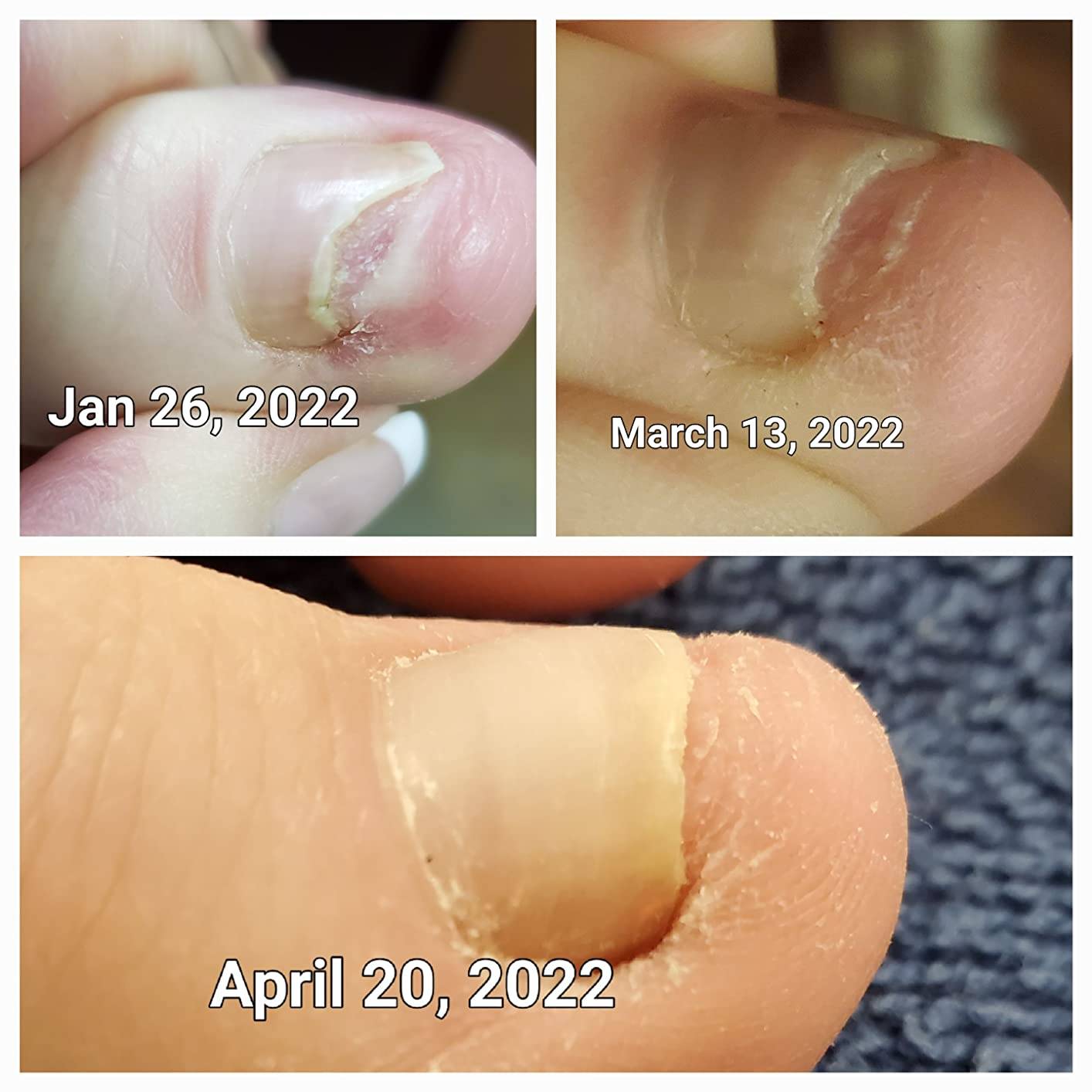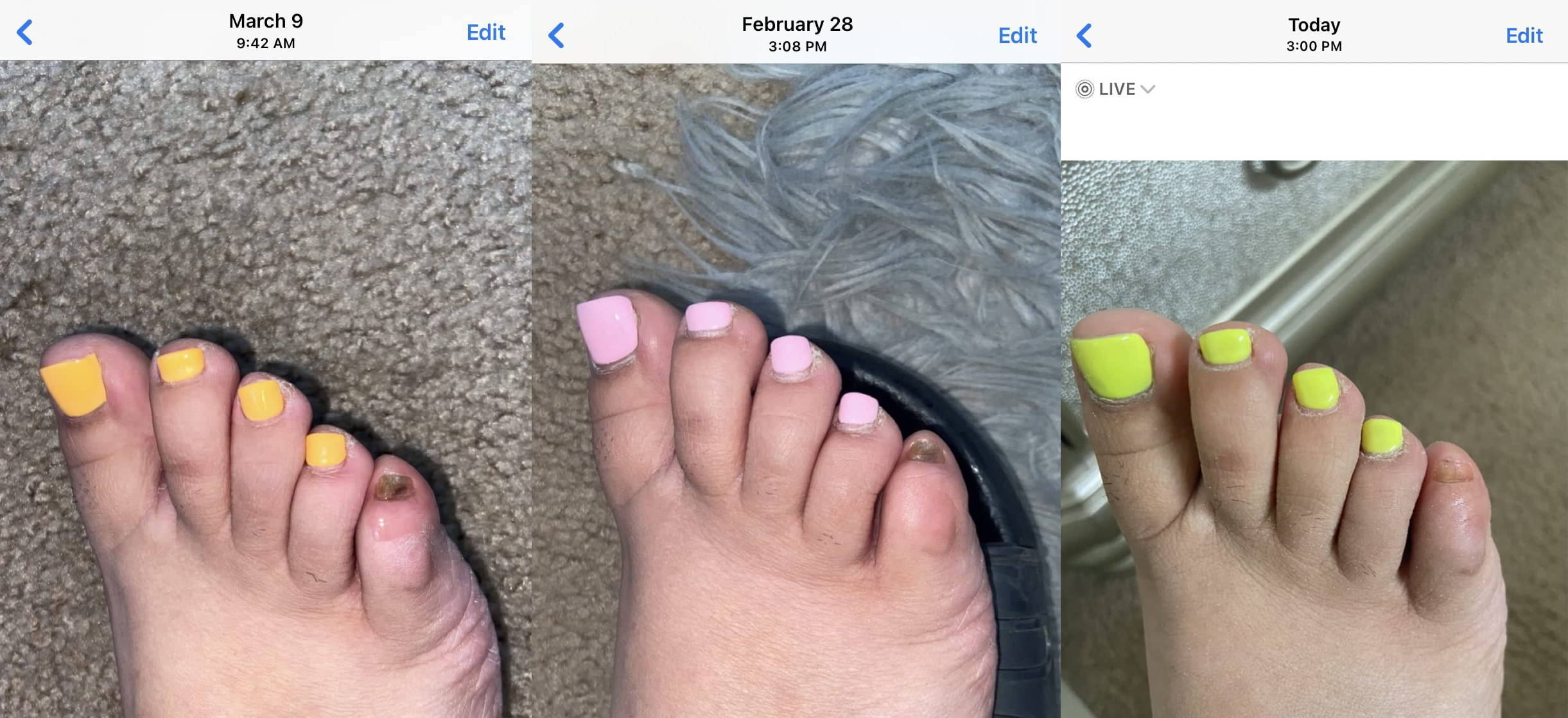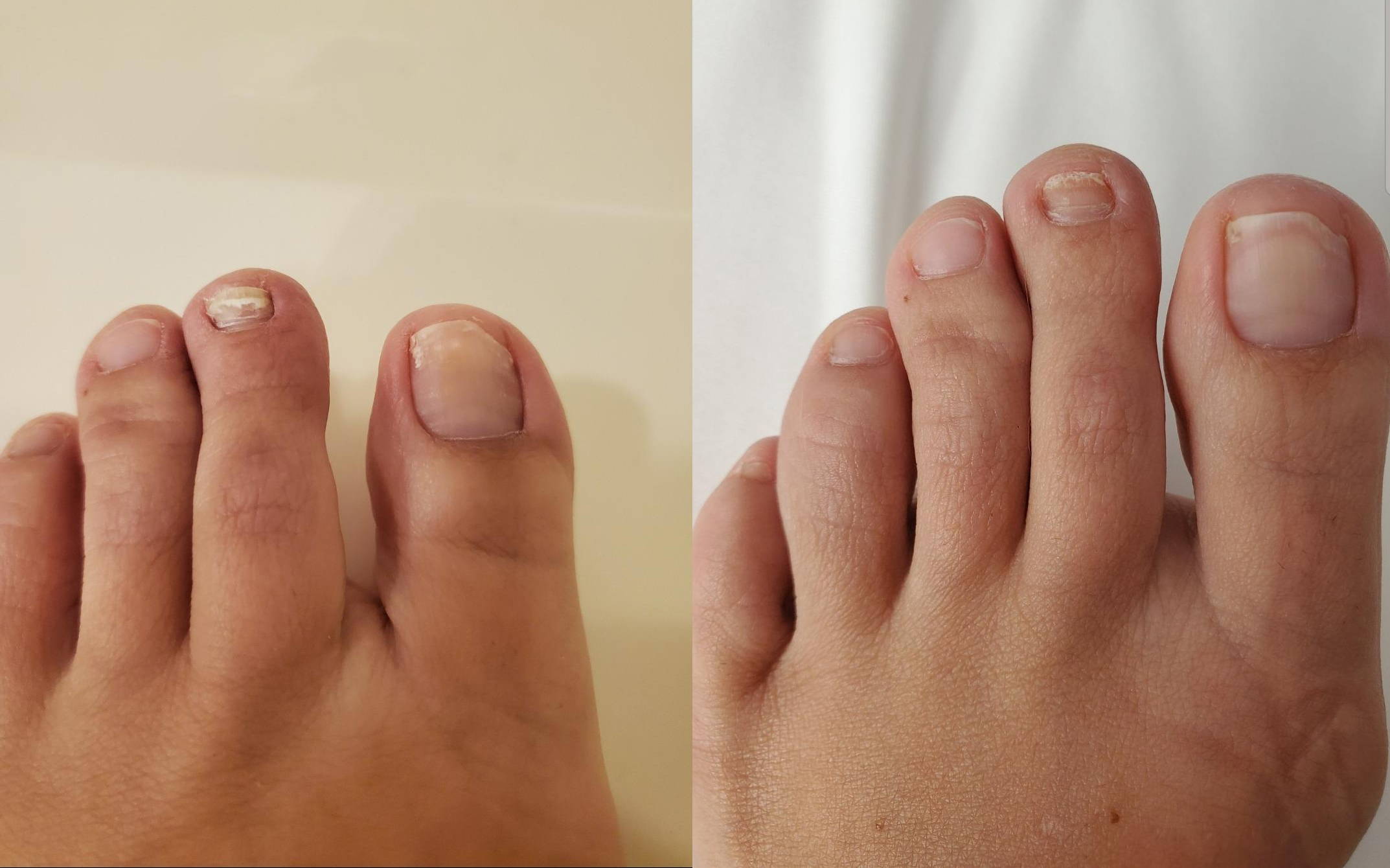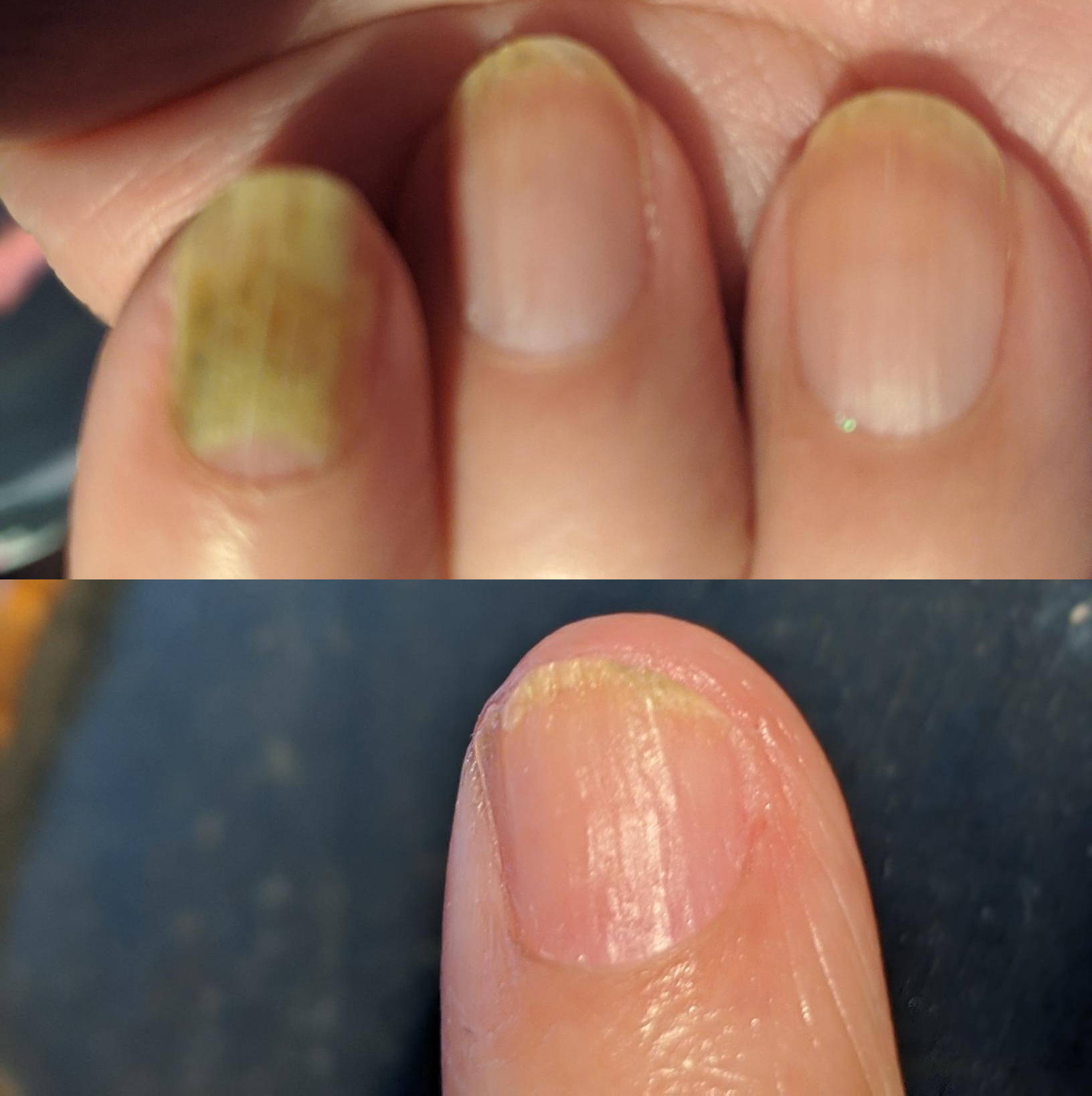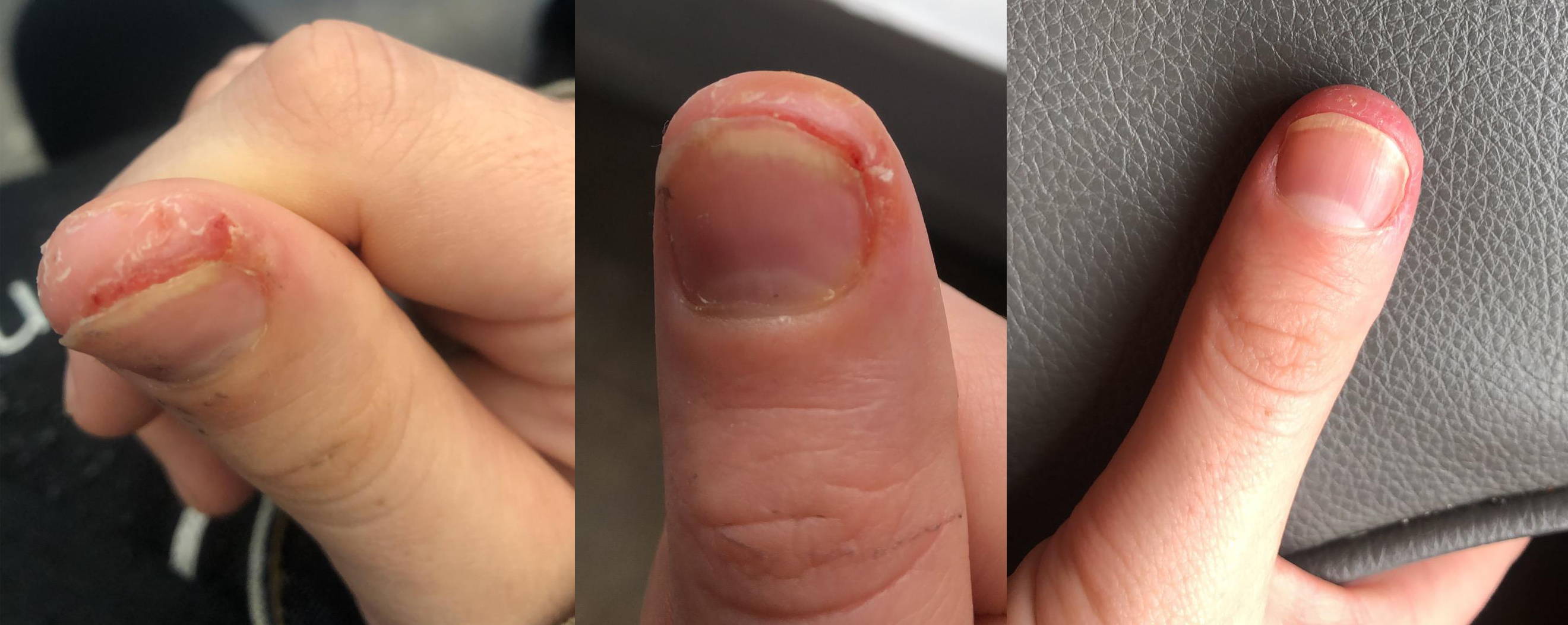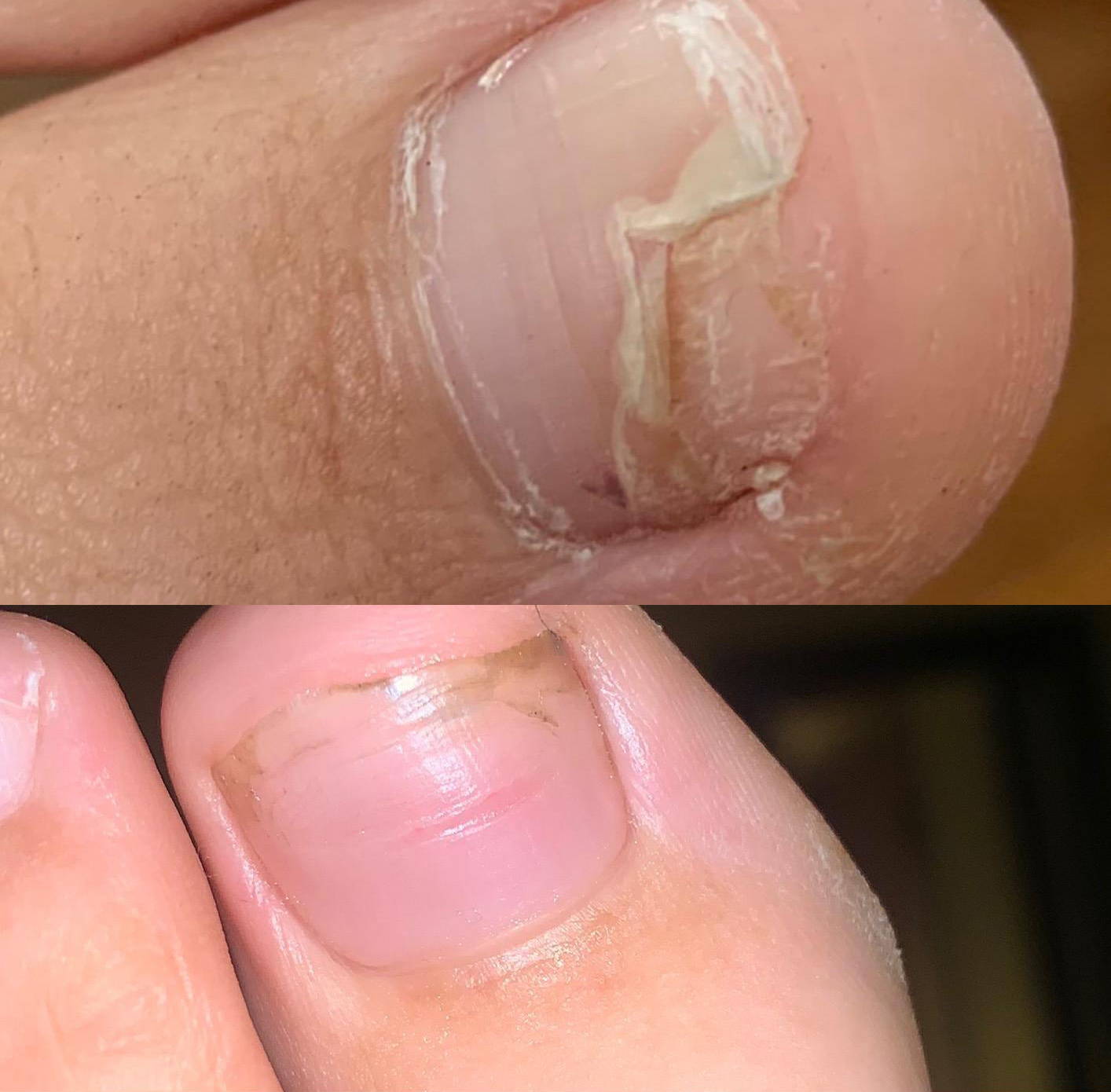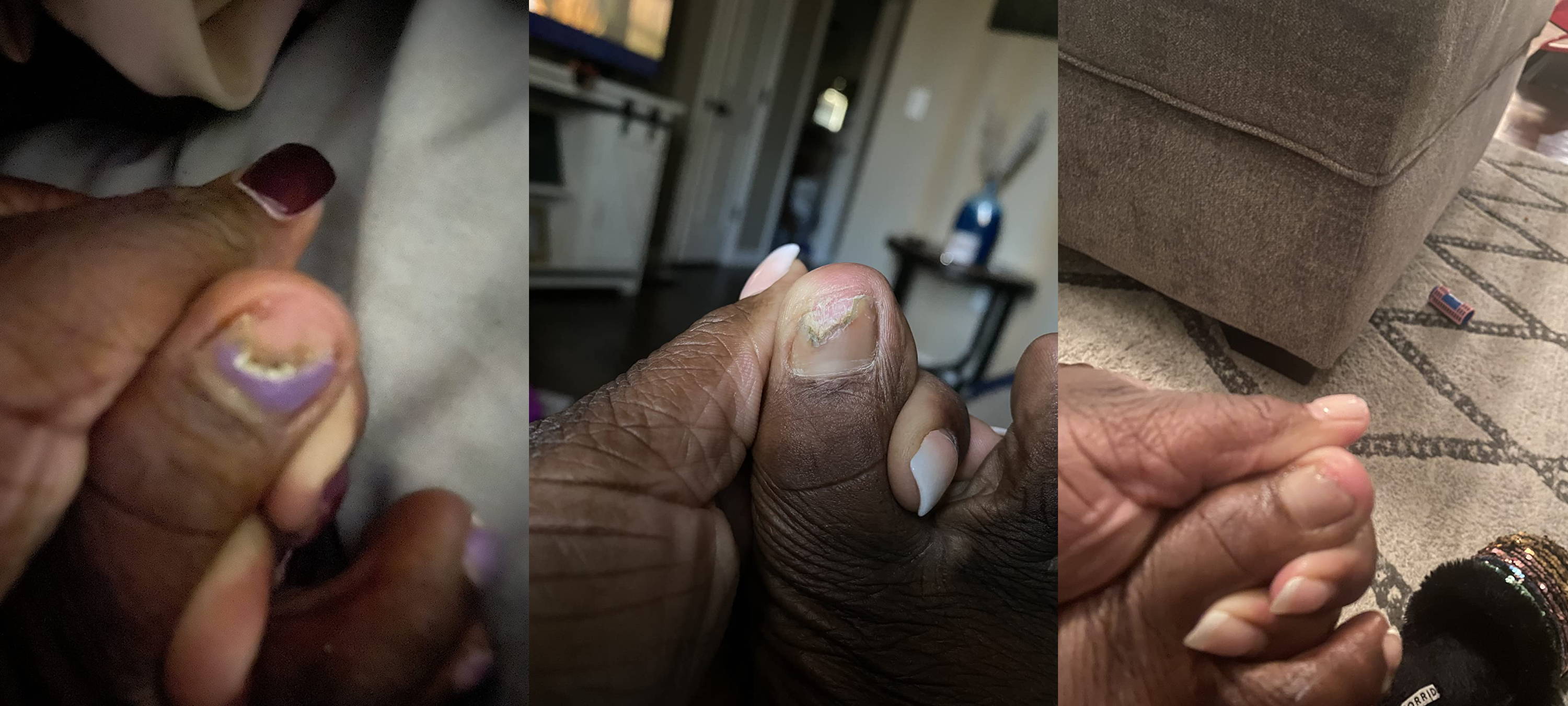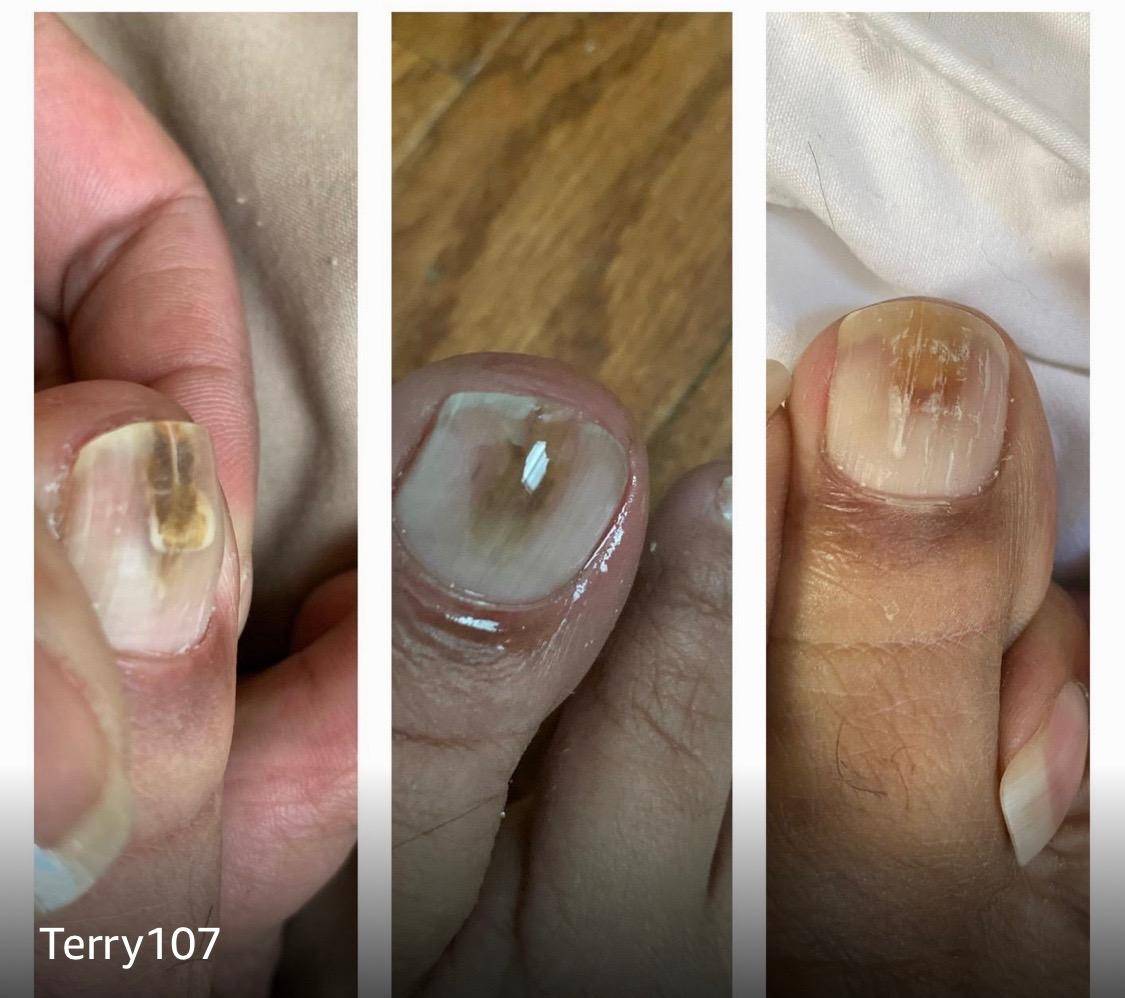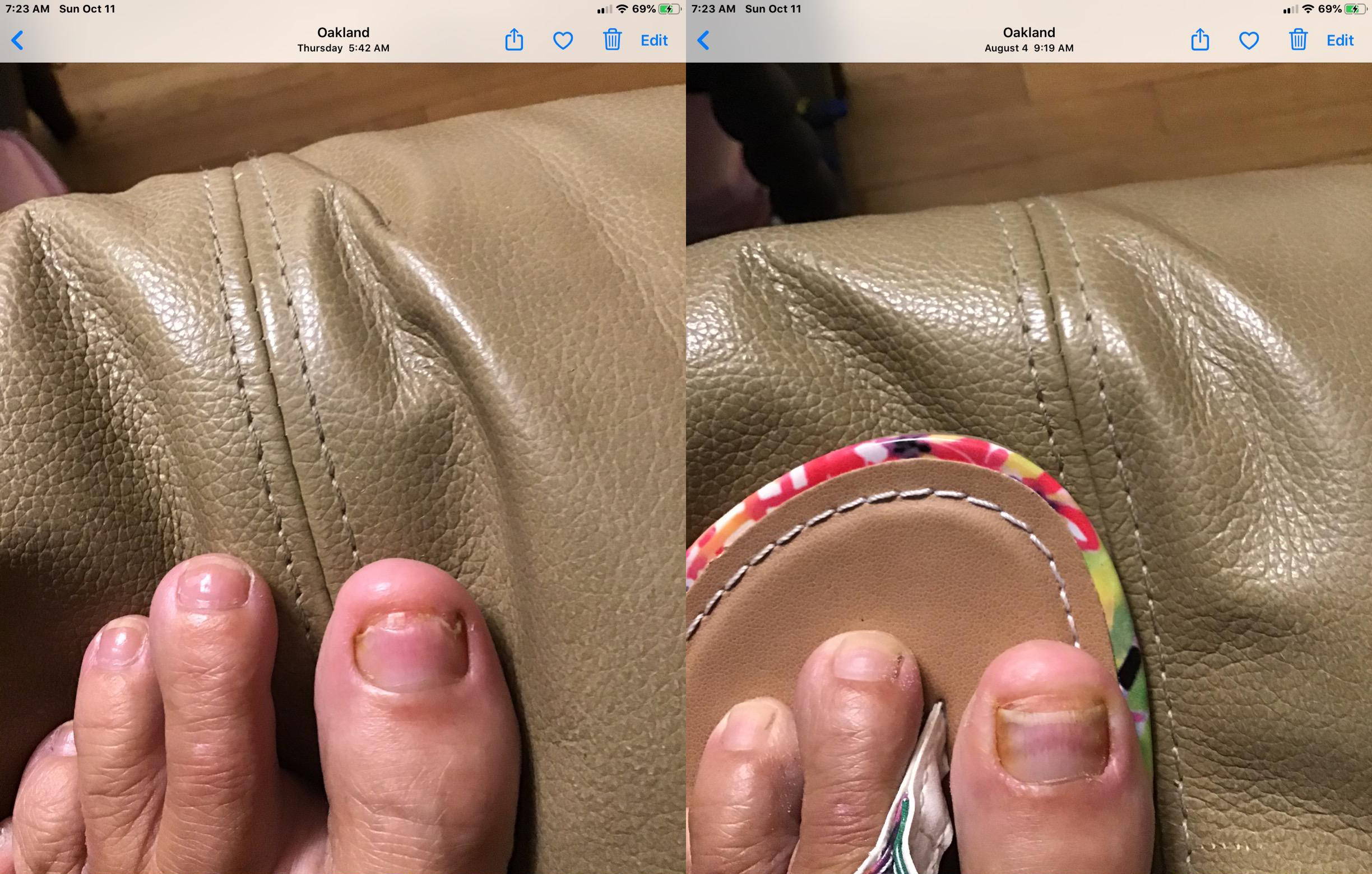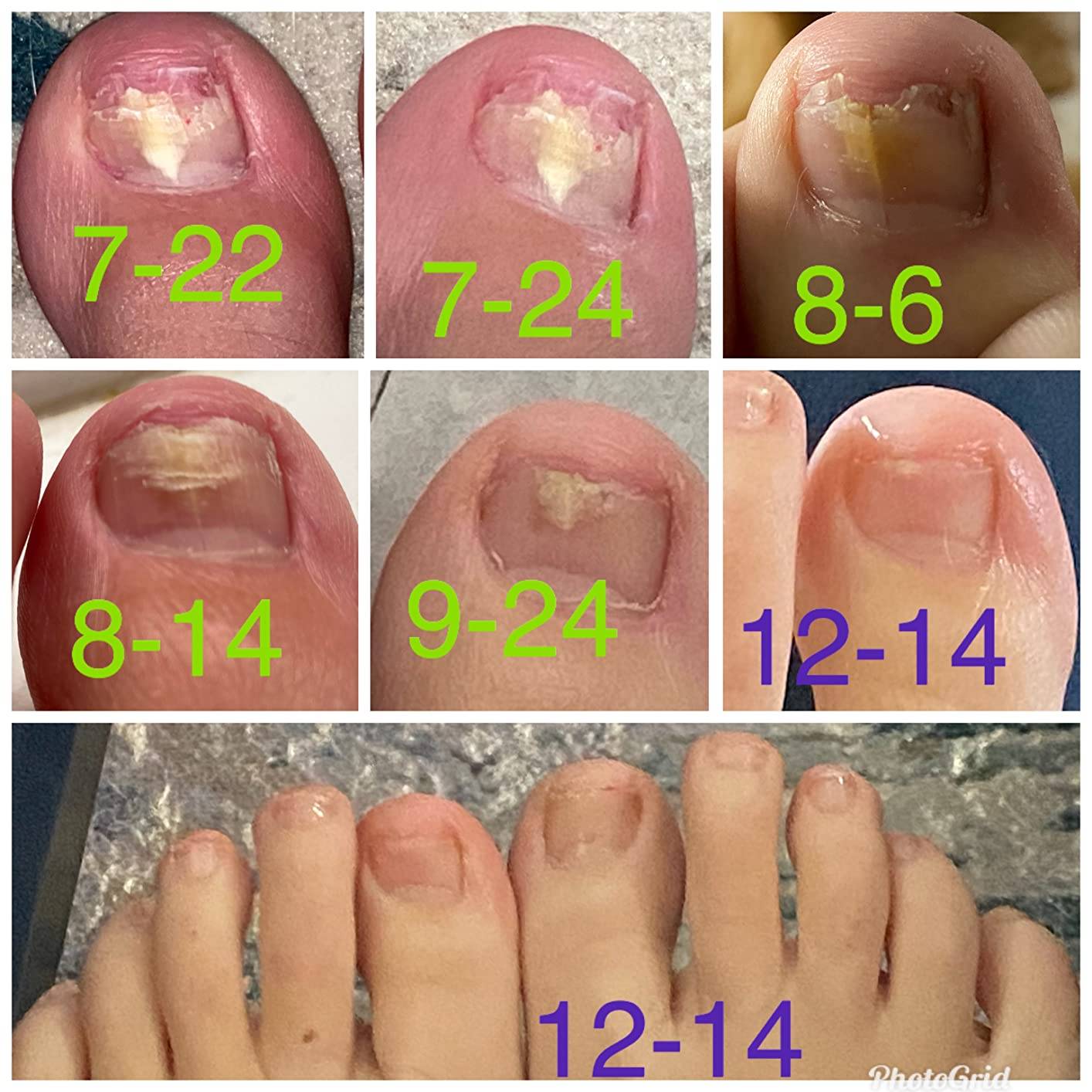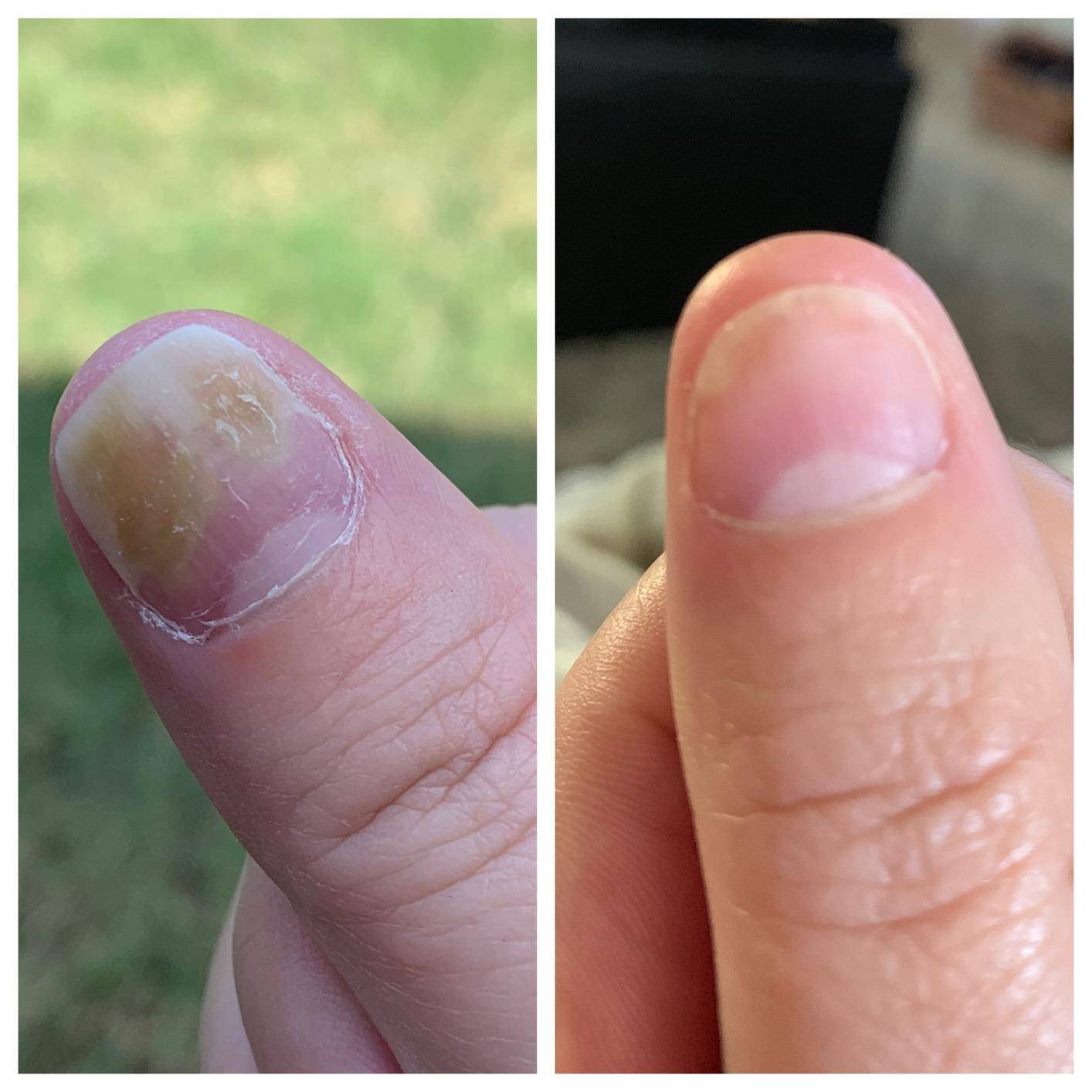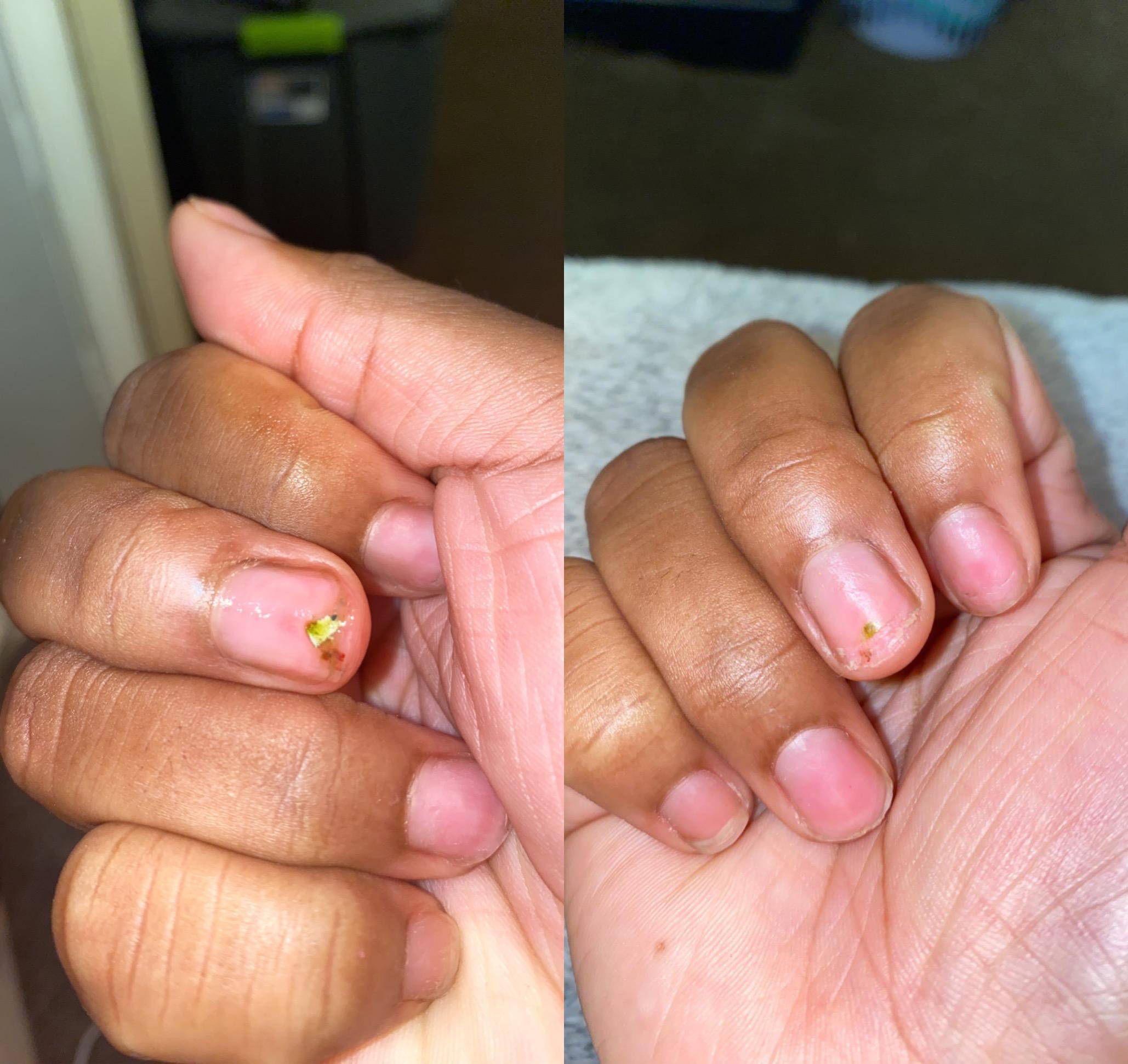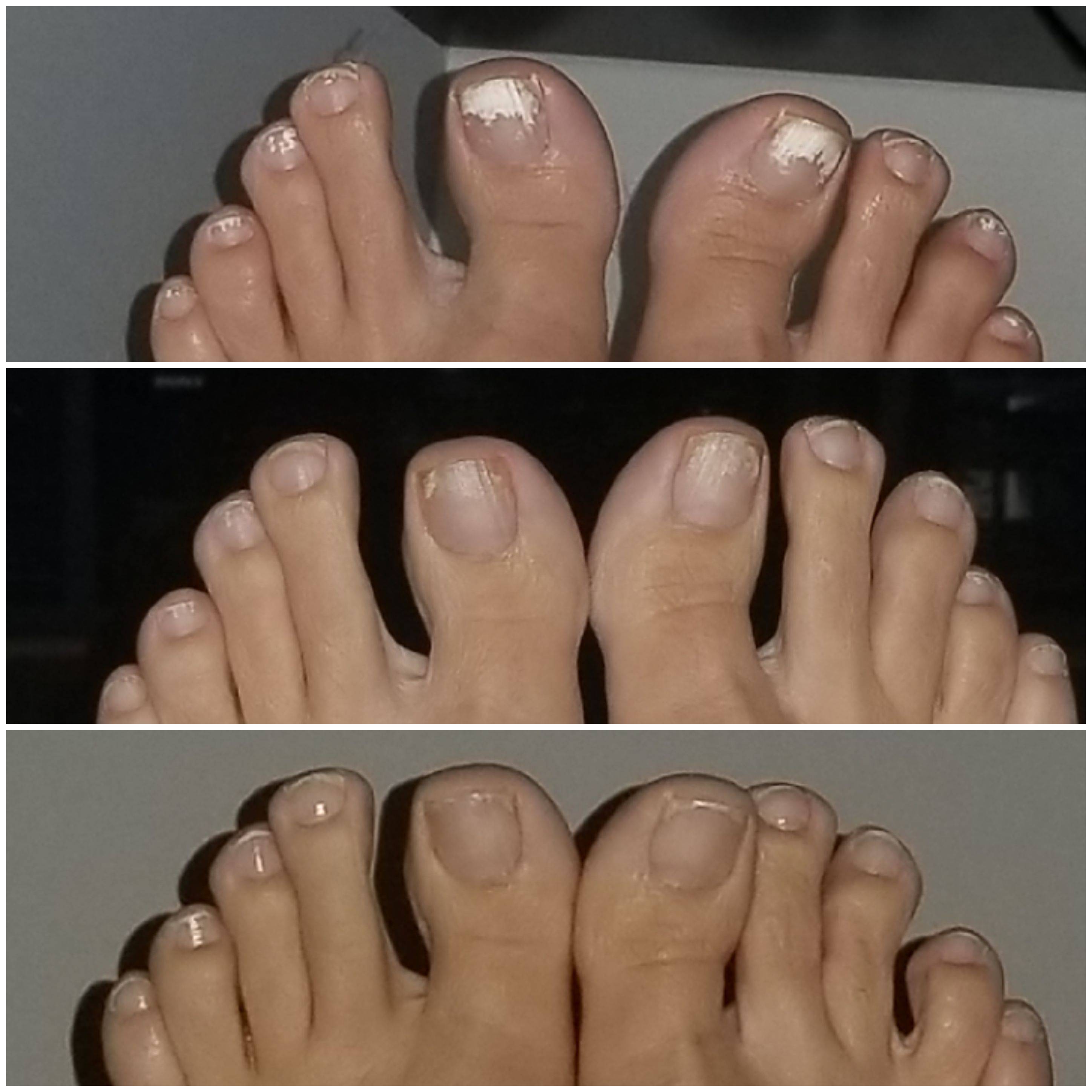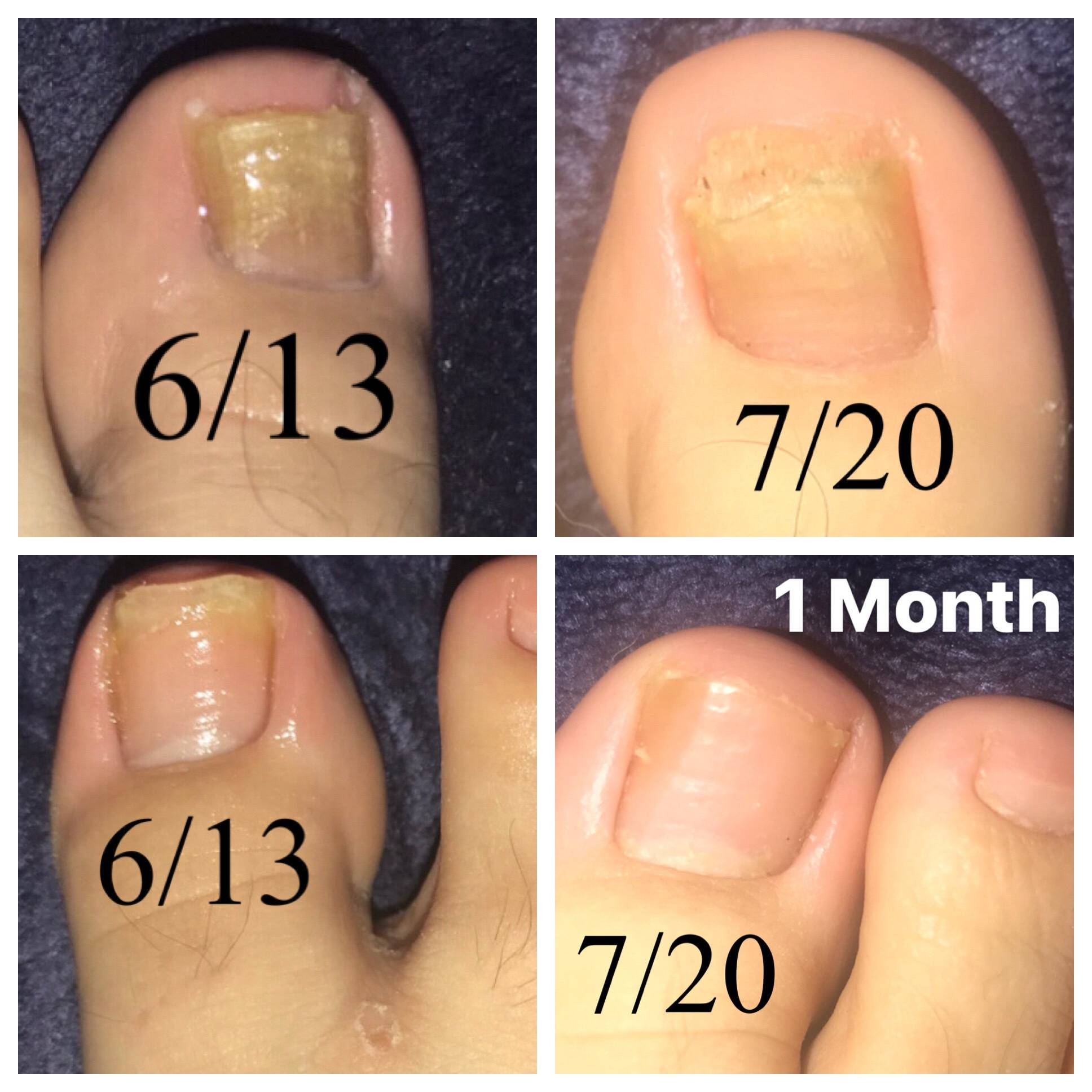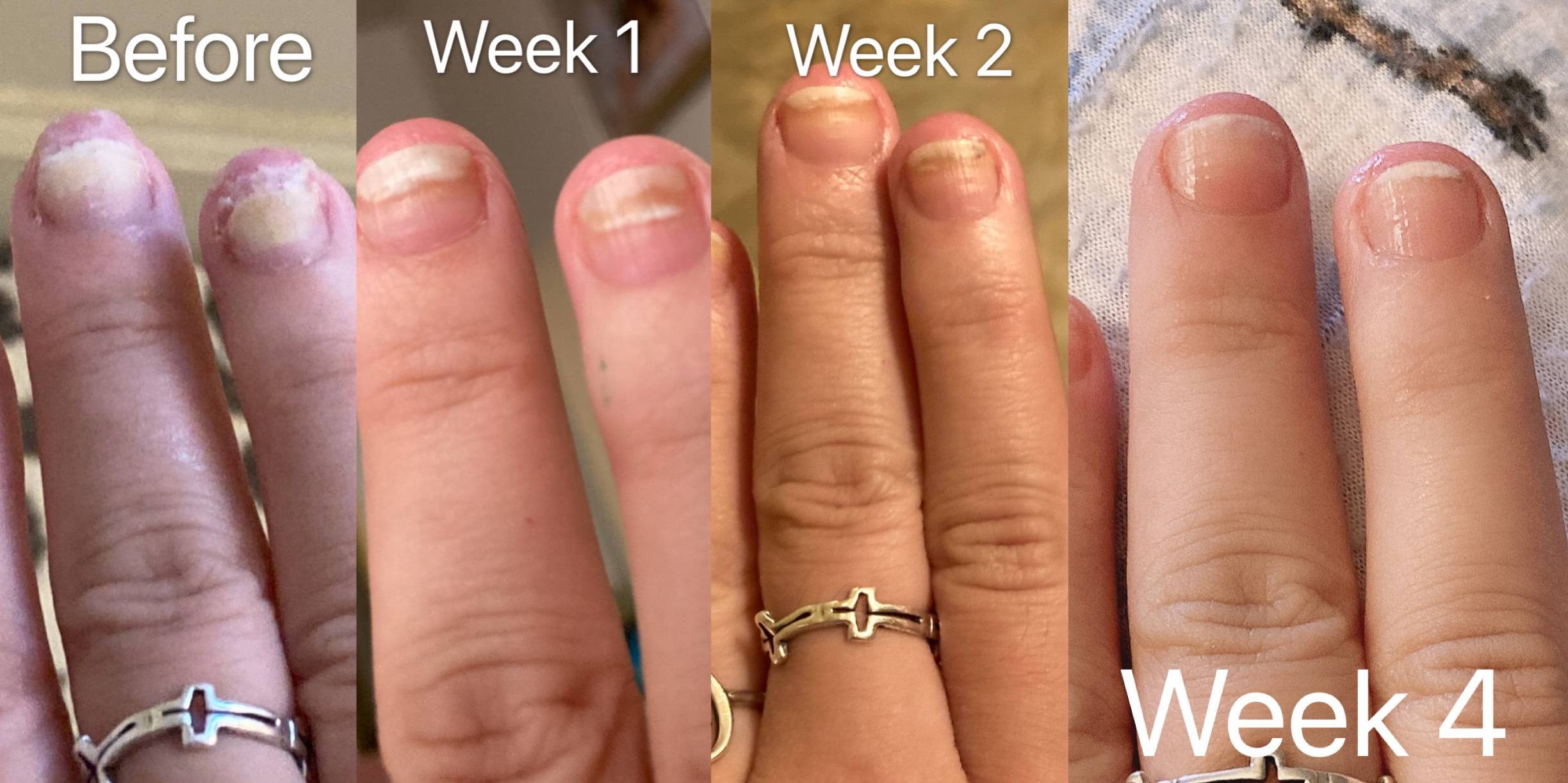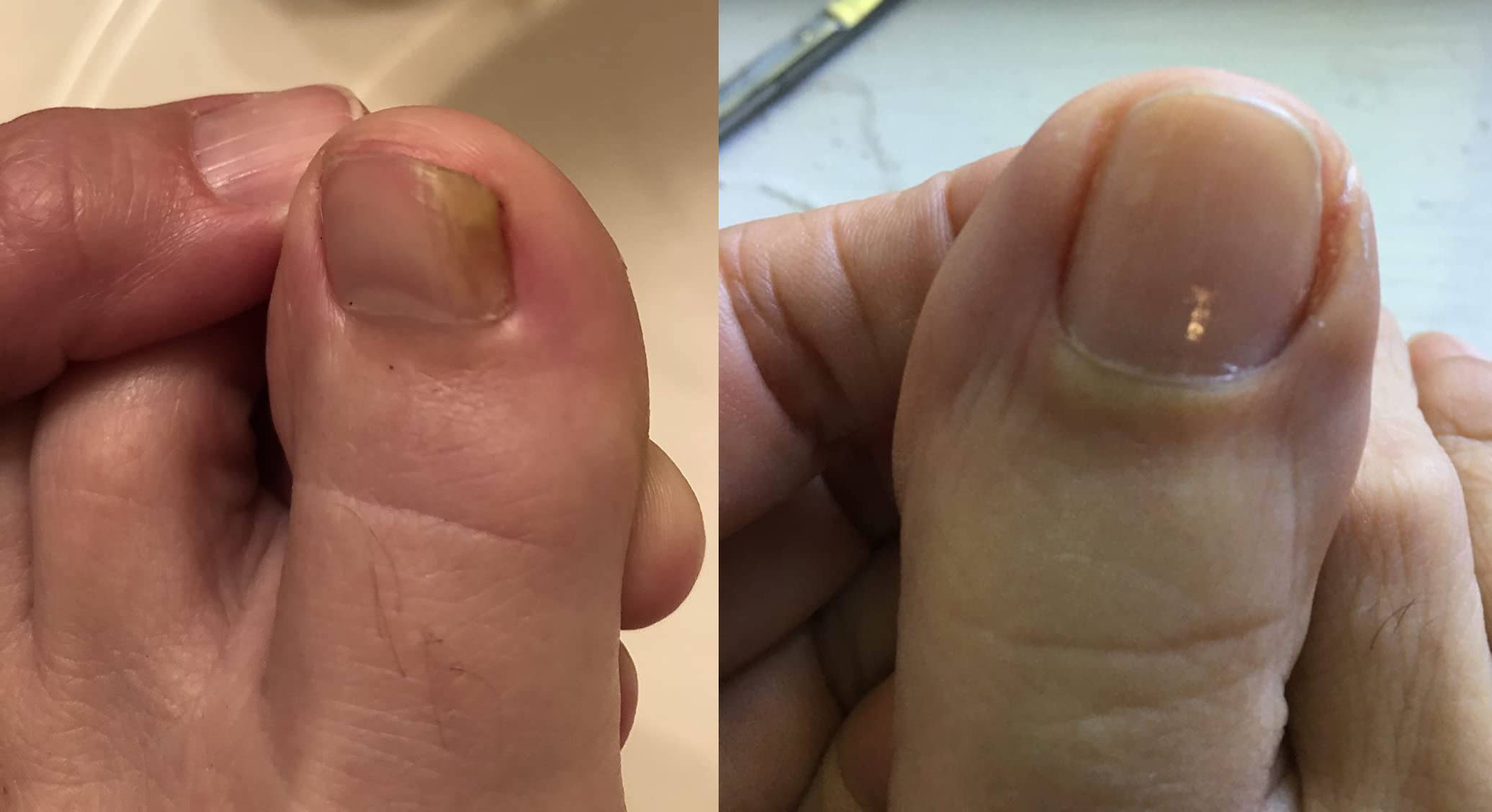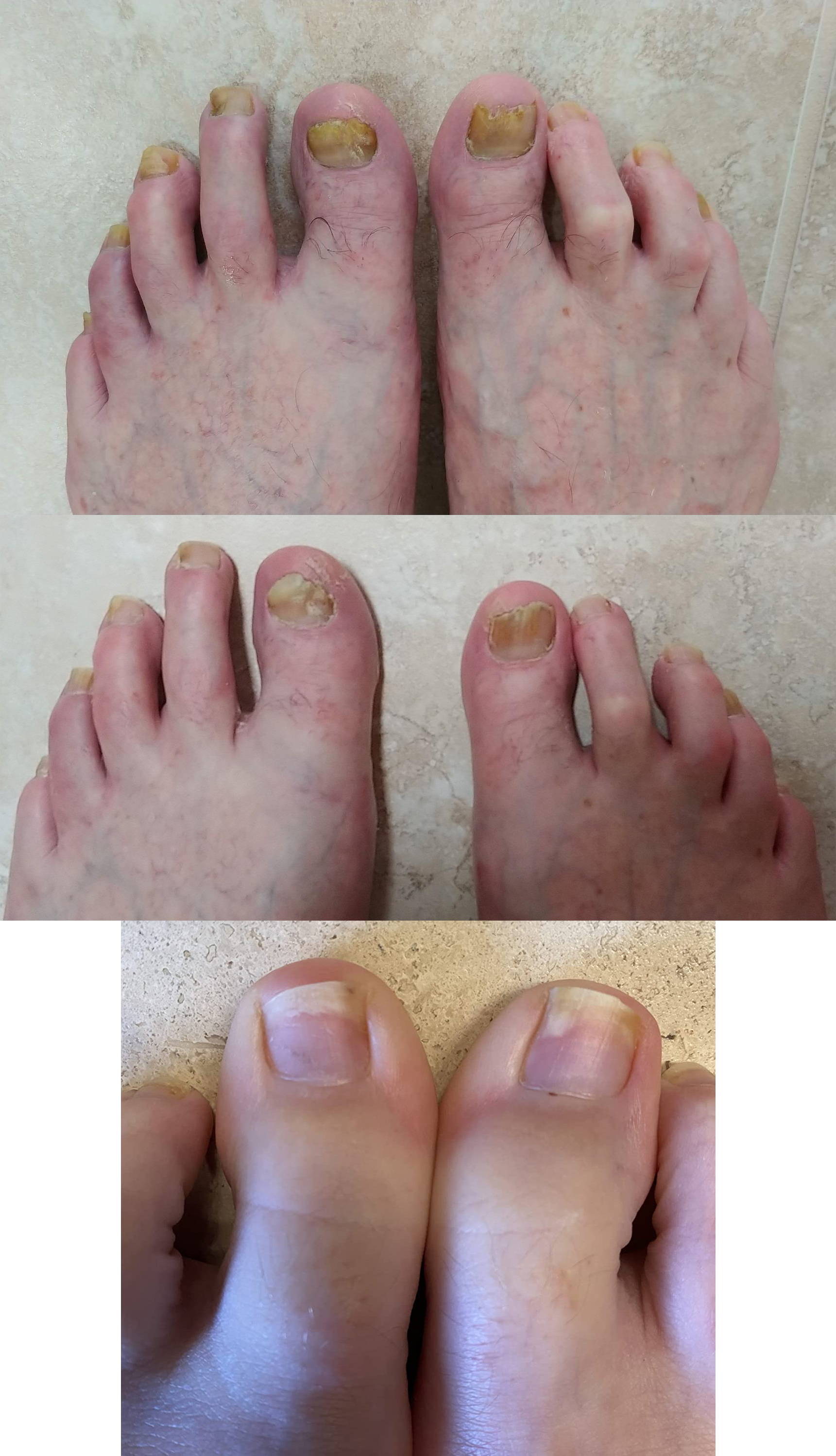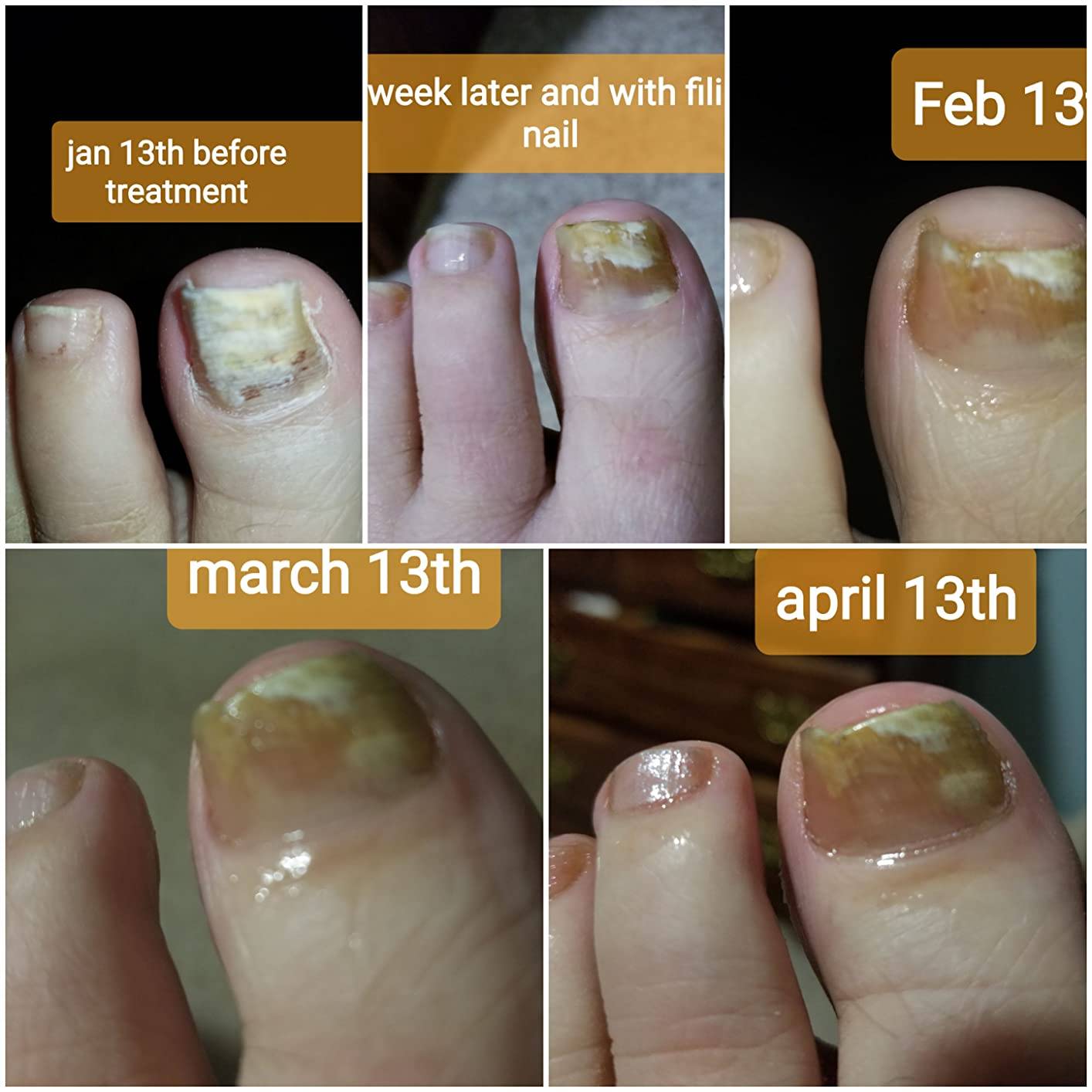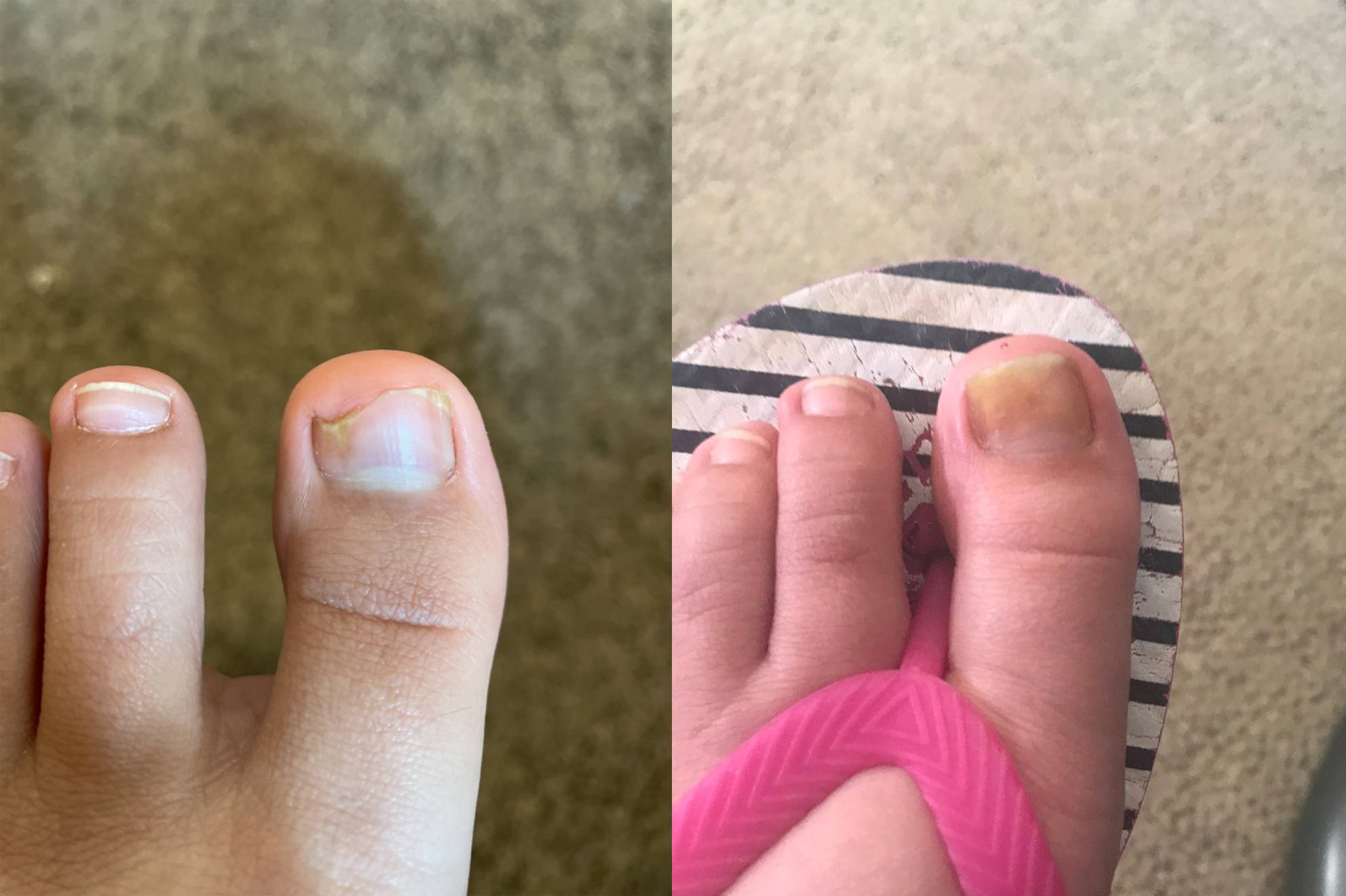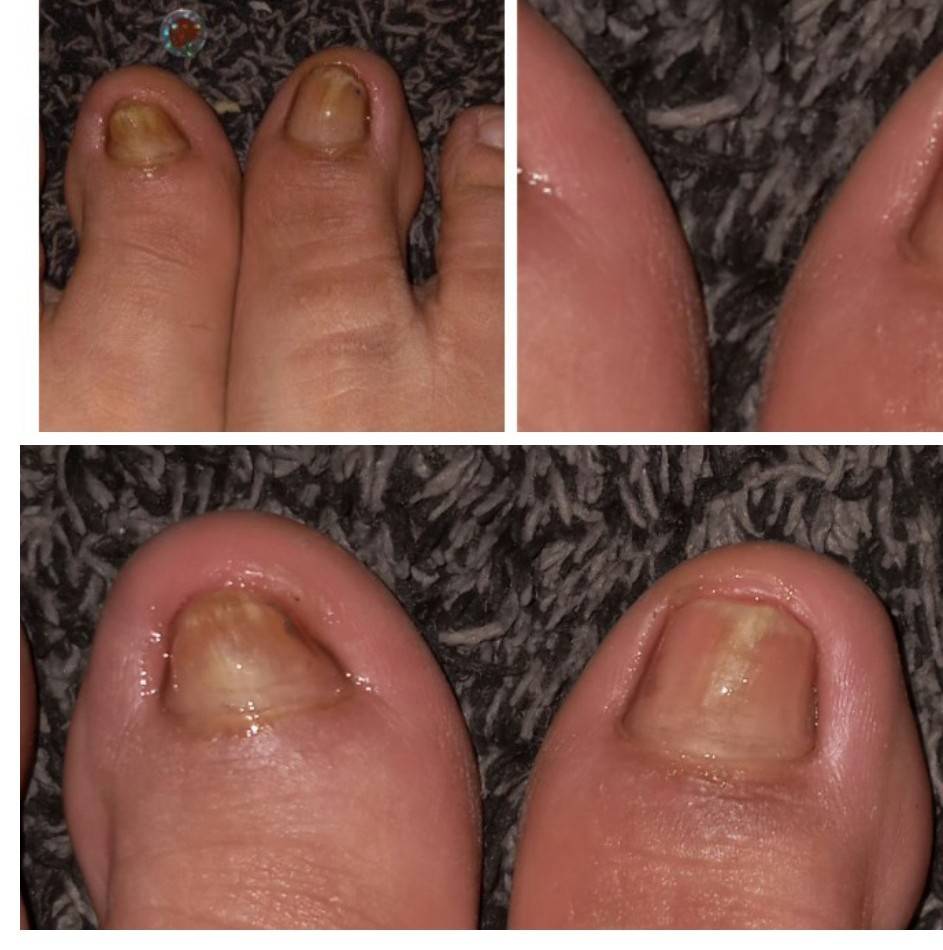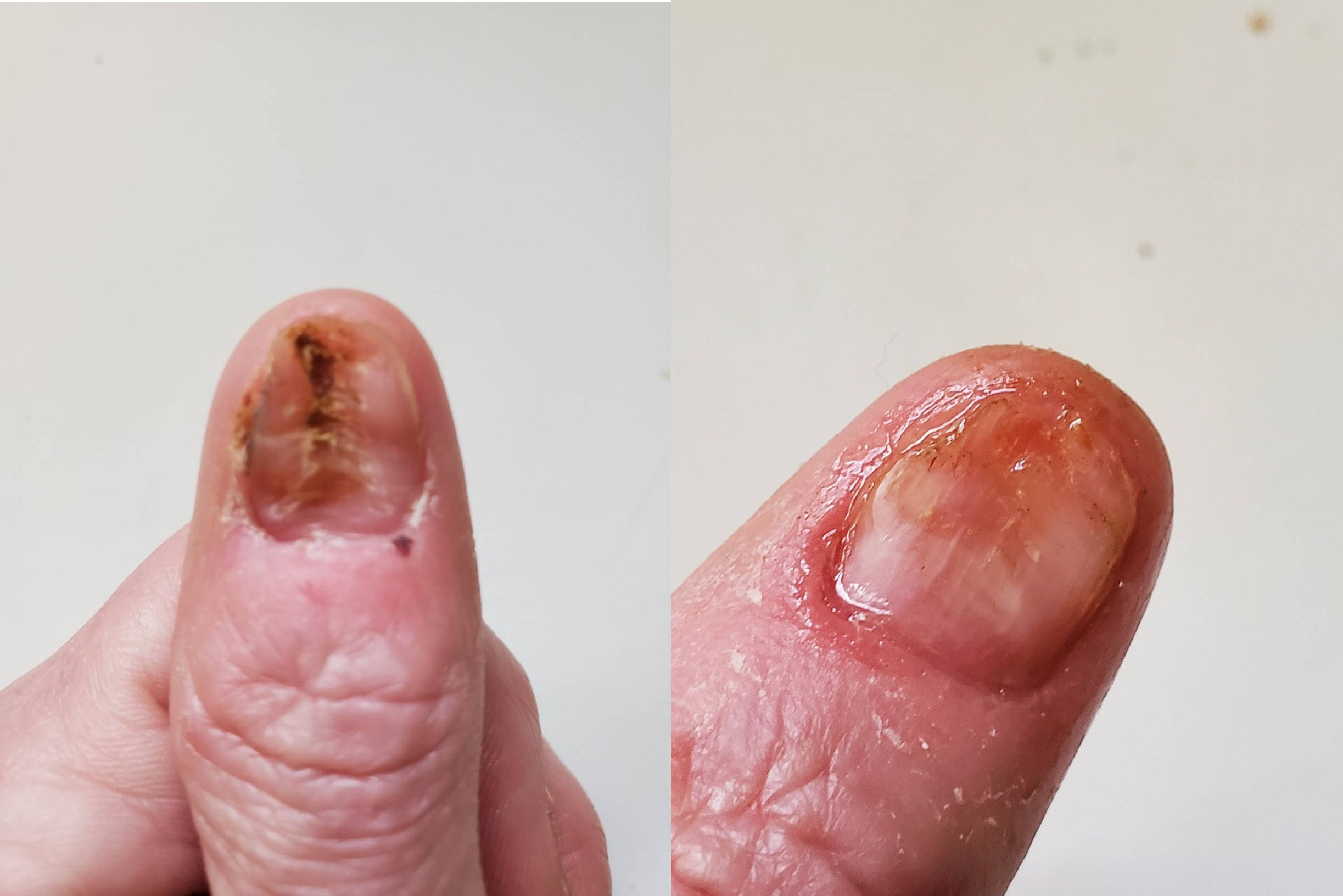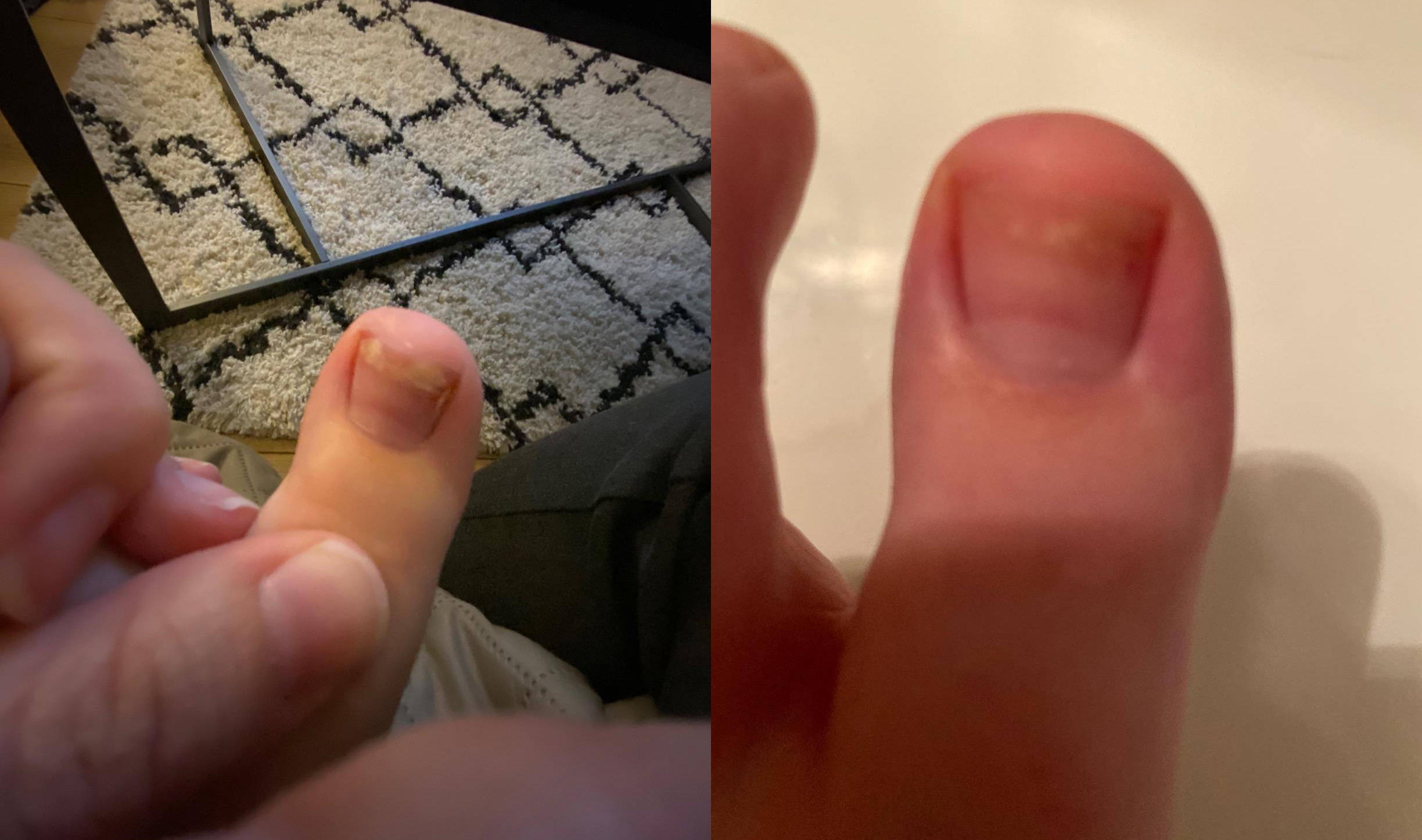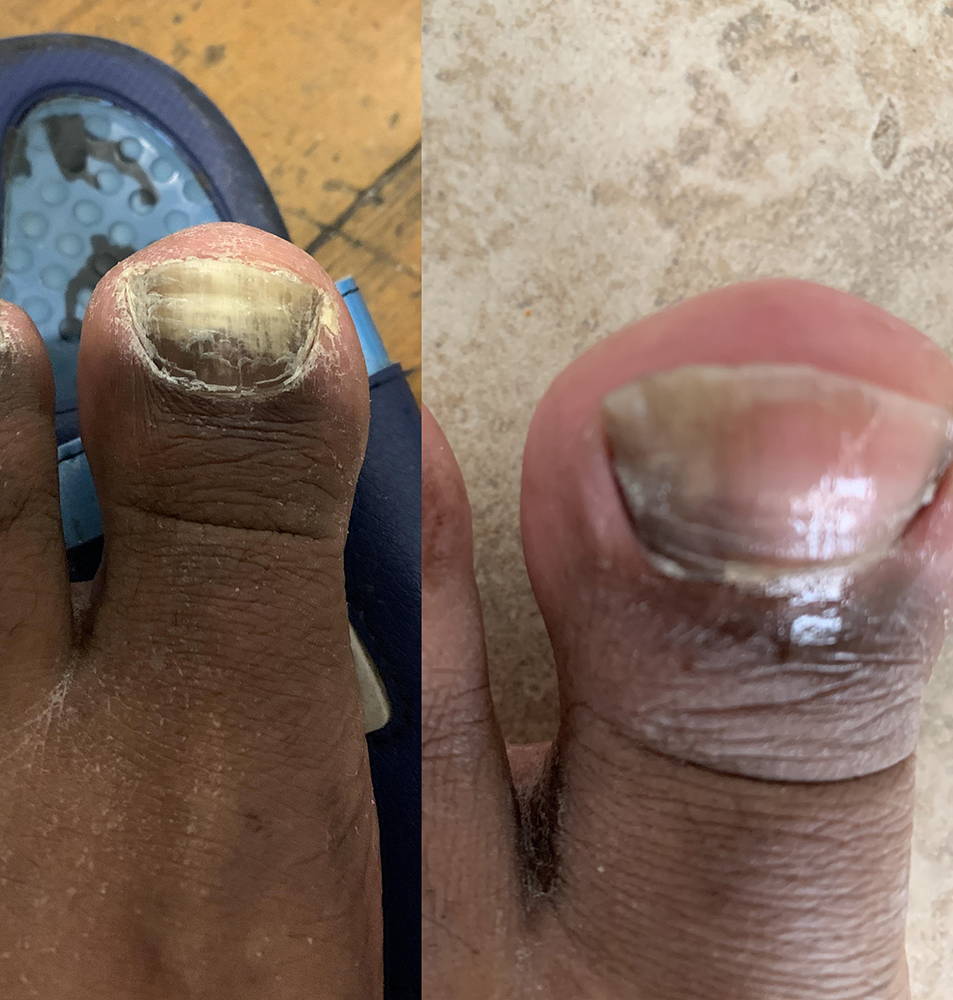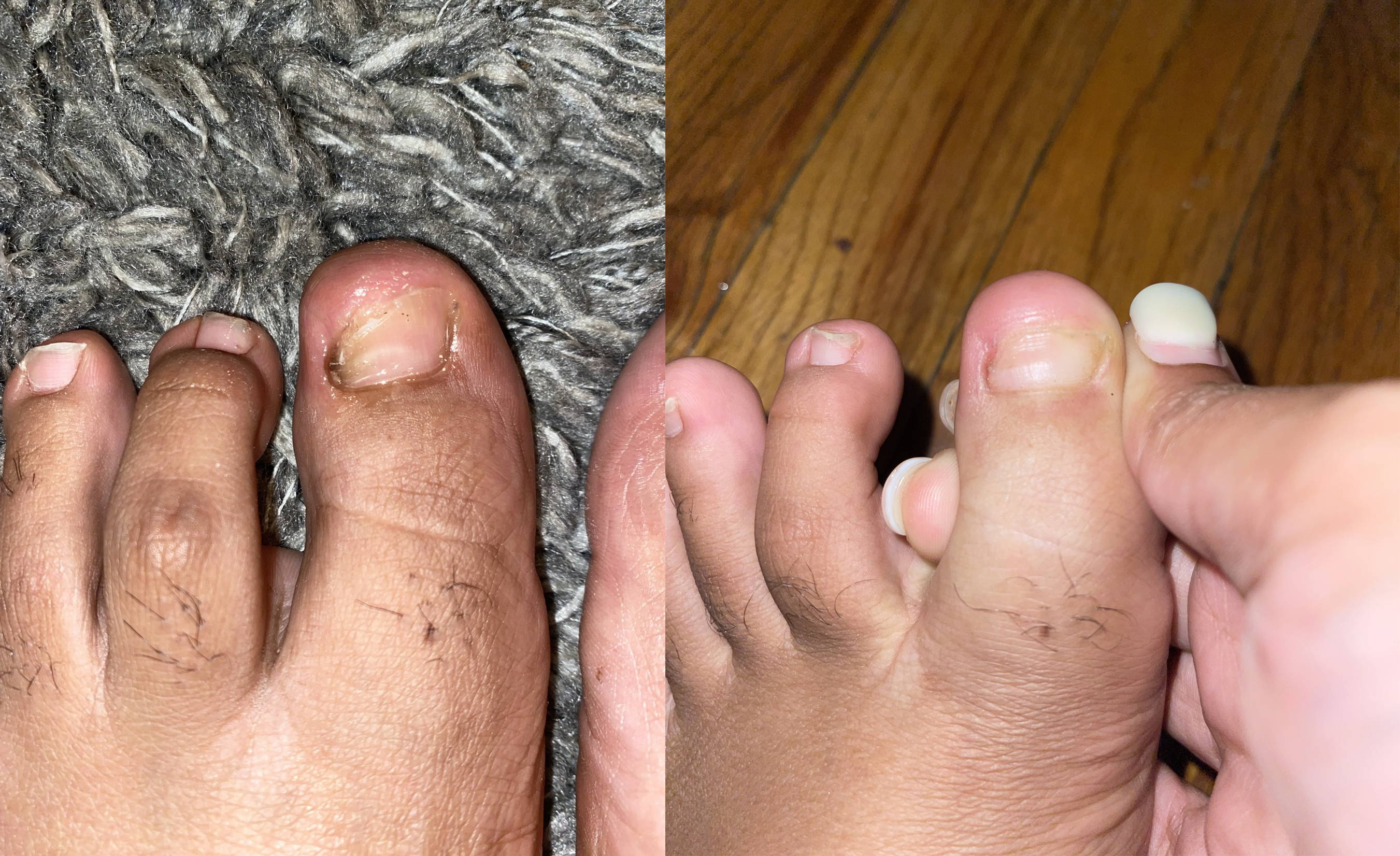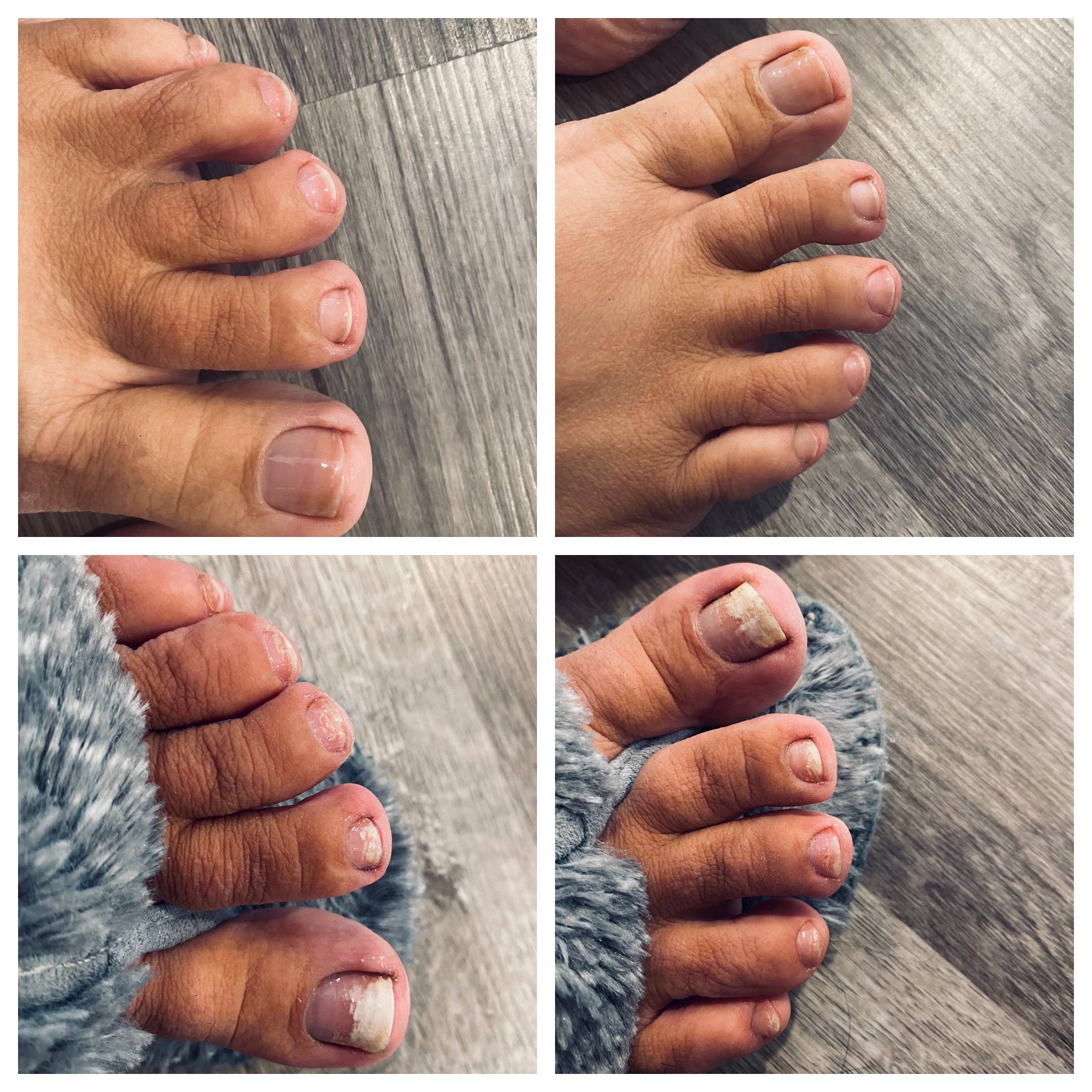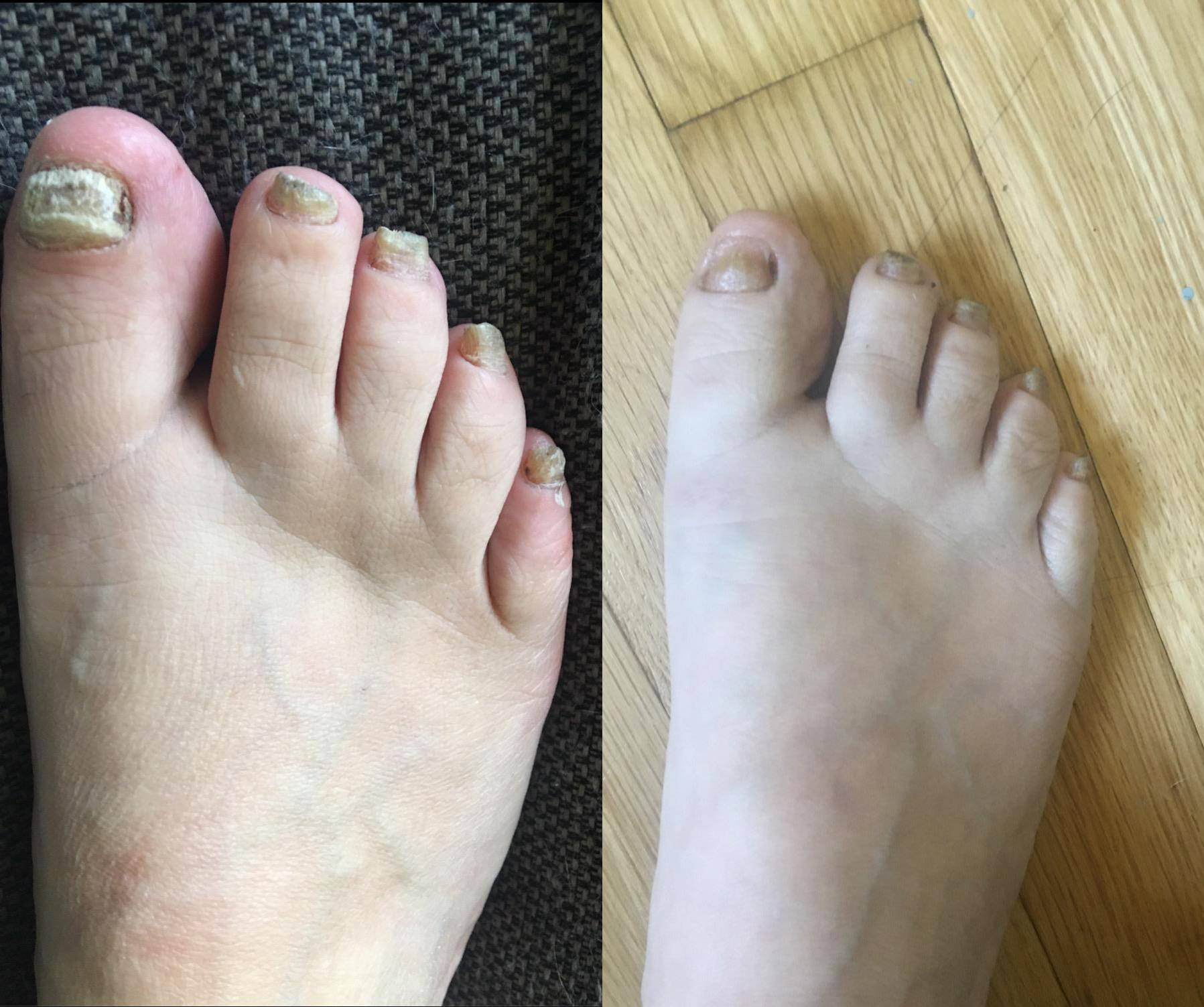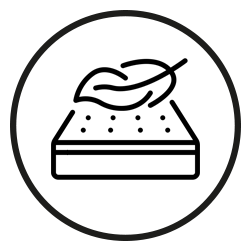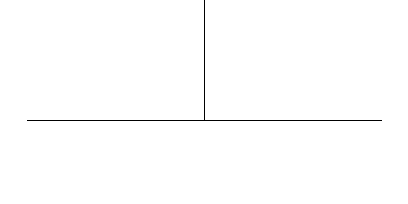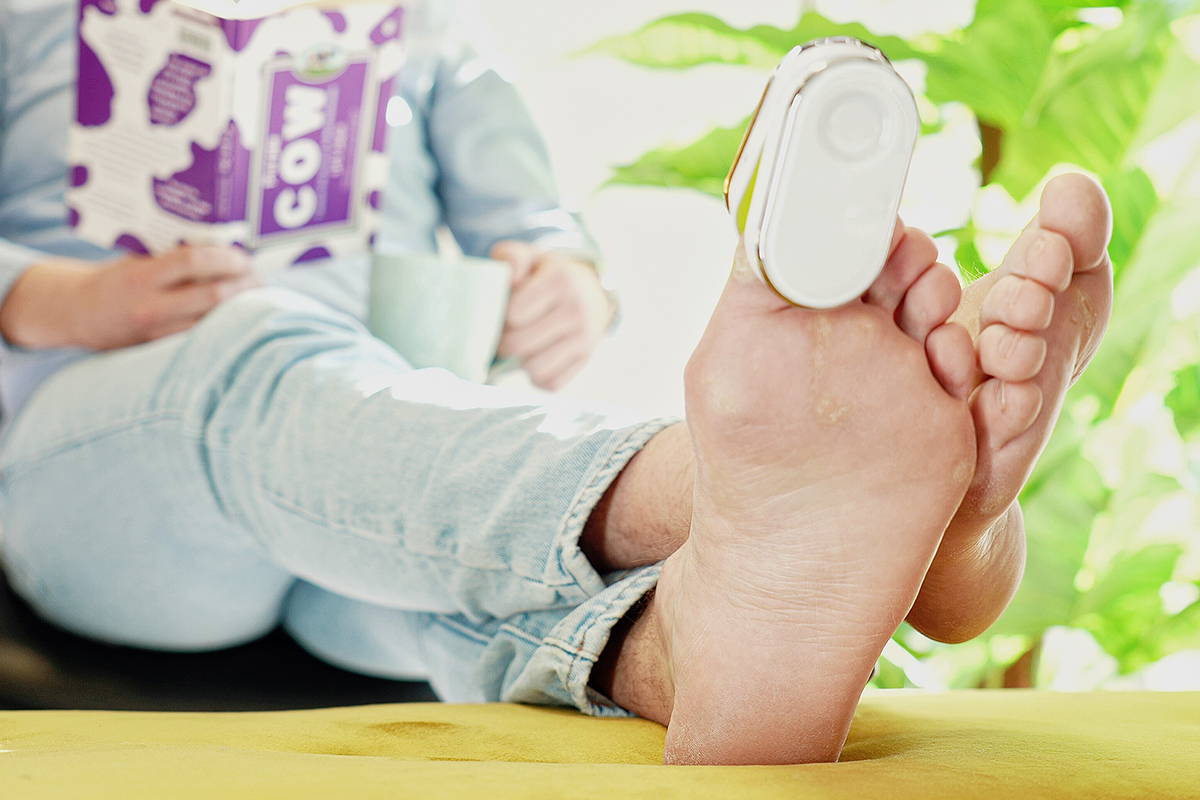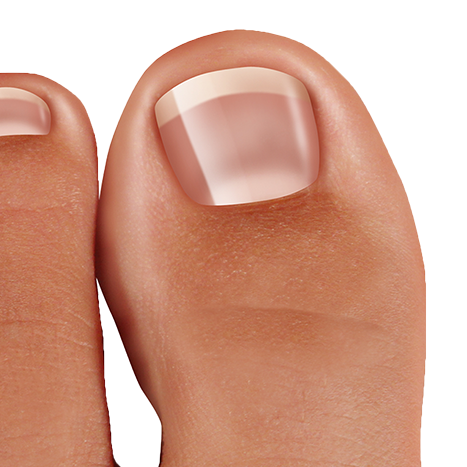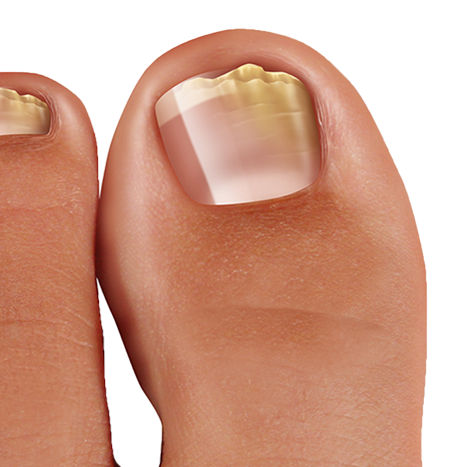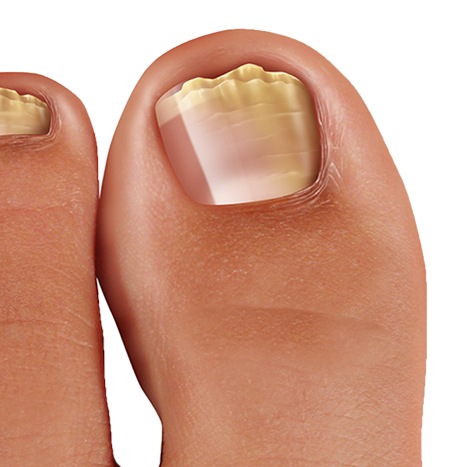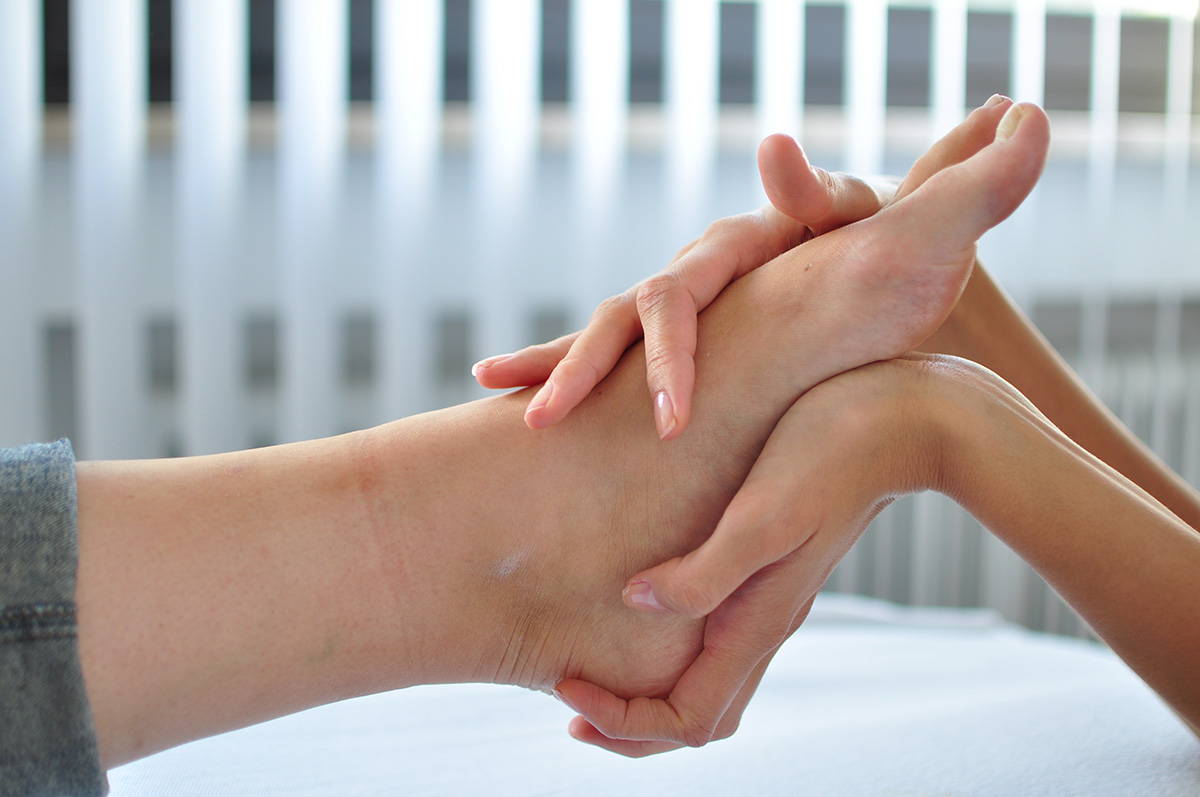Jeanne K.
Photos are before and after after daily treatment for one month with the Onychom. Treated nails with Emuaid before putting under 7 min. pulsating or static light treatments. You'll see the dead part of the nail on the right foot I was able to basically peel off after only a few days of treatment. I expect my nails to be mostly healed within the next 9 months. A friend suggested it will take a year; I think I'll correct in less time. Wish I would have purchased the five-toe model instead of the single toe model. I wound up recognizing I needed to treat several more nails, so I have to stack seven minute treatments instead of being able to put all nails under light for one 7 minute treatment. Only criticism is that the complimentary vial of treatment oil will not dispense. Will request a replacement, but Emuaid quite an amazing over the counter salve to treat fungus among other things. As for quality of machine, you get what you pay for - I would not go for one of those Amazon cheaper models. This is the gold standard, to the best of my knowledge and brief experience.
Deborah H.
my 2 nails were lifting at the bases they were discolored. the discoloration is gone..the nails have grown out. they are irregular shaped..I obviously have damage at the base BUT NO FUNGUS!!
Carrie C.
I’m honestly surprised at how well this has worked for me. I bought it knowing I might be wasting my money but it was well worth the try. I have struggled with the same nail having issues for years. I actually have an almost full healthy looking toe nail after 2 months of use. I’m really happy with this!
Troy R.
I'm not sure this actually works.
Daniel M.
We have been using the Dermachon laser and antifungal enhancer for nearly two months and do not see any improvement in our nail fungus condition. And, our conditions are not extreme, I.e., nail discoloration and thickening.
Joe F.
Works well and saw change in less than a month.
Bryan N.
laser device is easy to use. The oil dispenser is tricky. It's hard to know how many clicks to twist, and then it takes a long time before the brush is wet. Suggest a different dispenser system.
Gina C.
This truly works beautifully!
Brett S.
After years of issues, losing the nail, thickening and not growing- it is changing to a natural color and beginning to grow. First time needing trimmed in a couple of years.
Jeanette K.
I use it twice a day but I’m not sure if the affected toenail needs to grow out now…the appearance has not changed. I will continue to use the laser twice a day and do vinegar soaks as well.
Greg M.
I was surprised, to be honest, but it did succeed in removing the toe fungus from my toe.
I was concerned about the liquid because I am very sensitive to a lot of chemicals, but was pleasantly surprised that the ingredients were VERY clean and natural, and I had no ill affects at all.
Safe and effective. Actually, not according to FDA. At least for me.
david s.
The device is certainly easy to use; I run it 2X per day and the nails' appearance has improved, but they have not yet grown out. Staying quite confident that after about 20 years of onychomycosis this device is the cure!
Darwin C.
Just starting, hope to see the result soon.
Karen T.
The dermachrom for toe fungus is a great tool. My husband, John, uses it daily. he has not had to go to the podiatrist in over 2 years thanks to this little device. The toenail fungus is highly reduced. The nail beds are thinner. Although not totally gone, it is better than any device, cream or other. modality that he has tried.
Kean V.
So far so good, don’t see a difference yet . Using as directed?
Chris C.
Easy to use, effectiveness moderate, accelerator liquid is not easy to get out of the dispenser
William M.
I feel that daily use of both laser lights on the dystrophic great toe nails has shown good progress towards resolution. Infinitely better than ANY topical product.
Paul S.
The device appears to be working correctly but, I have not seen a major improvement. Killing the fungus may take a longer period of time.
A.R. D.
I must be patient!
Joy B.
wo9rks great like it
Sharon S.
I purchased this for my spouse to treat a fungus issue on 3 toes that had been there for a number of years. I honestly didn't expect it to work but was gladly proven wrong. It arrived 2/2/25 after a reasonable purchase and delivery experience. All 3 nails are noticeably better and well on their way to being cleared up as of this writing on 3/31/25. We recommend this product.
Priscilla R.
I have been using this for one week twice a day and it is like a miracle. My nails aren't yellow and the two thick ones are shedding. Thank you so much!
Steve H.
The first thing that's ever worked!! Thanks!
Darrell P.
Great Product that actually works. Easy and fun to use.
Scott D.
It's making a big healing difference in a toe that has battled fungus for over 5 yrs!
Victoria G.
The device is easy to use and has worked! After 1 week a signicant difference was noted. After 3 weeks, it's clear fungus is almost gone
Melissa J.
This machine is great, but it didn’t come with a charger. How do I get one?
Chris T.
Working well all new growth is white. Cant wait to fully grow out. Not an instant fix but works, you just need to be a little patience
Robert D.
My daughter loves
Barbara B.
I’ve been using the Onychom Antifungal Laser Device on my right thumb nail since January 23rd. As of March 21st there is significant improvement. Still a way to go but I am very pleased with how it is working.
Kelly D.
Struggling with rough nails, this device has certainly begun to clear them up.
Martin D.
It seems to be improving my infected nail.
Clarissa P.
After I bought the second one, all of a sudden, your company comes out with the one that does the whole foot which I’d much rather have. But I didn’t think it was fair that you couldn’t tell me it was available when I bought the second one.
Larry l.
Larry here. This is amazing little device. I've been using it now for about a month. It's really did a lot of improvement. Matter of fact I wish I would have took them before and after picture had fungus ever since I was 16 years old. I'm 78 now and it's working on me. I would recommend anyone to try this device cuz I've tried everything all the topics but this one works. When this machine goes out I'll probably buy another one anyway. They give me fast delivering good price. That's all I got to say. Thank you Vicky
Peter M.
Well made. Charges fast. I bet it lasts forever.
Terry O.
Works fine however switching modes is difficult .need to add a switch .
Elena N U.
Good experience!!
Leila N.
The remedial appliance exceeded initial projections regarding potency. Consistent employment over two months delivered marked nail clarification. Handling the gadget necessitates minimal instruction, advantageous for those less technically inclined.
Haden S.
I'm not cured all the way, but its definitely working, especially compared to everything else I've tried! Great idea!
Phoenix M.
Healthier nails without specialist appointments!
Miyuki Q.
The innovative innovation has eradicated my persistent condition entirely. Following multiple failed treatments, this methodology has finally delivered the consequences I desperately pursued. The compact proportions allow for discreet storage when unused.
Fareed D.
Produces impressive outcomes when employed according to guidelines. The quality manufacturing suggests durability for years of reliable service.
Hazel E.
Remarkable restoration process with minimal effort required!
Marina R.
Generates superior outcomes when applied systematically. The cable-free design enables remedial sessions virtually anywhere appropriate.
Carol L.
Best investment I ever made hands (feet) down!
Spence T.
We have been using the laser device approximately 5 weeks now, along with the laser Enhancer. My nails are showing a definite improvement. We were using an OTC anti fungal liquid for over a year, no change at all. Now in less than 2 months, our nails are clearing up and actually have lost their ugly stain. Dermachom WORKS!
Rudolph S.
Easy routine to keep
Logan P.
Remarkable transformation with minimal effort!
Nina O.
The medical-grade technology conceived for household deployment has entirely renewed my nail wellness. The intuitive architecture makes application straightforward even for those without technical expertise. The untethered architecture substantially enhances treatment adaptability.
Kofi R.
The revitalization progression transpired with unforeseen rapidity!
Jacqueline P.
I like this product. I do believe I’m seeing results after 4weeks.
Once daily and using the enhancement sticks/liquid
Fingers crossed
Candy C.
I have been using this product for 6 weeks and it seems to be doing a great job, however, I wish I had known more info on it. I researched everything I could find. I have a darker colored vertical line appearing on my toenail, and I have an appointment with a dermatologist to have it looked at. I'm finding through research on your product that this device should NOT be used if there is a possiblity of nail cancer. I feel this should be disclosed to your buyers.
Quinn L.
Complete healing with minimal time investment!
Jamie D.
Functions admirably when used according to instructions. The sophisticated engineering is evident in both design and performance.
Farah I.
Functions admirably when employed according to instructions. The sophisticated engineering is evident in its reliable performance.
Santiago V.
From uncertain to wholly convinced upon witnessing actual results! This photonic device overcame my troublesome nail situation completely. The straightforward controls suit people across technological proficiencies.
David W.
Worked as advertised. Struggled for three years and nothing worked until I tried this. Would recommend to anyone
Taylor K.
Complete healing in the comfort of home!
Hassan A.
Delivers exceptional effectiveness with steady application. The sophisticated engineering is evident in its reliable efficacy.
Skyler W.
Delivers commendable results with diligent application. The cordless design enhances convenience substantially.
Diego R.
The metamorphosis exceeded all sensible expectations. After periods concealing extremities, I finally don open footwear without reservation. The mild approach triggers no reaction during treatment procedures.
Aida W.
The innovative innovation contained within this compact implement has entirely renewed my nail wellness. The intuitive architecture renders application straightforward even for those without technical knowledge. The untethered operation substantially enhances convenience.
Rich C.
So far my toe is looking great
Tim F.
I’m still using it, but I gotta say I think it’s actually working. Tried medication from the dermatologist for two years. That never worked. Looks like this might be the cure.
Ryuu V.
The transformation exceeded all rational projections. After spans concealing extremities, I finally sport open footwear without hesitation. The mild approach triggers no skin response during wellness appointments.
Priya I.
This health device has significantly enhanced my nail appearance. Premium-priced but ultimately economical compared to professional procedures.
Finley P.
Functions admirably when utilized according to directions. The sophisticated engineering is evident in its consistent performance.
Kenji H.
Hospital-grade intervention within residential comfort!
Robert K.
The Onychom device provides effective treatment for fungal infections, though results weren't immediate in my case. After approximately six weeks of consistent application, I observed significant improvement. The user interface is intuitive, making home treatment straightforward.
Ahmed Y.
The state-of-the-art methodology has fully renewed my nail wellness. The straightforward operation requires minimal temporal investment for maximum advantage. The cordless architecture ensures uninterrupted management even during journeys.
Leila E.
The advanced innovation has eradicated my persistent condition entirely. My podiatrist expressed amazement at the prompt improvement. The intuitive operation makes health sessions quick and convenient.
Huang A.
My podiatric specialist endorsed this radiance applicator, and the consequences have affirmed that recommendation. Though initially uncertain regarding the monetary commitment, the renewal justified the expenditure entirely.
Shawn F.
Game-changer for treating stubborn nail fungus!
Lara C.
Functions admirably for residential treatment of persistent conditions. Initially hesitant regarding the investment, but the consequences have thoroughly proven its value.
Hiroshi K.
Revitalized nails without discomfort or obstacles!
Vincent D.
I never write reviews, but this product deserves praise. The ease of use and effectiveness are unmatched by anything else I've tried. My nail fungus is completely gone after decades of struggling with treatments that never worked.
Reese P.
The innovative approach to treating my persistent condition has yielded exceptional results in half the time I anticipated. The lightweight design makes it easy to maneuver around affected areas for thorough treatment.
Emerson K.
This wellness instrument has notably improved my nail condition. Somewhat premium-priced but ultimately cost-effective compared to professional treatments.
Riley K.
The innovative approach to treating my stubborn condition has yielded extraordinary results in record time. My dermatologist was impressed by the transformation. The intuitive controls make operation effortless regardless of technical proficiency.
Galina L.
Creates notable advancements with stable application. The power reserve accommodates multiple curative sessions before requiring restoration.
Seema P.
The wellness equipment surpassed primary suppositions regarding potency. Faithful usage across ten weeks yielded unmistakable nail clarification. Activating the hardware demands elementary instruction, advantageous for persons less technically proficient.
Tariq B.
Revolutionary healing without complications or negative reactions!
Doris H.
Very pleased with my purchase despite initial skepticism.
Esteban D.
Waterfront visits no longer trigger unease thanks to this clever apparatus.
Roy M.
I've tried everything for my nail fungus—this is the only thing that actually worked!
Laila K.
Revitalized appearance emerged within half months!
Armando P.
Clinical-caliber intervention within residential comfort!
Olga S.
The corrective accessory exceeded my anticipations for personal management. While positioned at a premium price point, the impeccable production and effectiveness authenticate the outlay.
Ahmad P.
The revolutionary methodology for treatment has entirely renewed my nail wellness. The intuitive architecture makes application straightforward, and the modest proportions allow for discreet storage when unused.
Ahmad L.
The revolutionary methodology for treatment has entirely renewed my nail health. The intuitive architecture makes application straightforward, and the modest proportions allow for discreet storage when dormant.
Christine C.
Who knew getting rid of fungus could be this easy? The device is intuitive to use, completely painless, and surprisingly effective. I saw noticeable improvement much faster than with prescription medications I've tried in the past.
Isabella U.
Dramatic turnaround in under thirty days!
